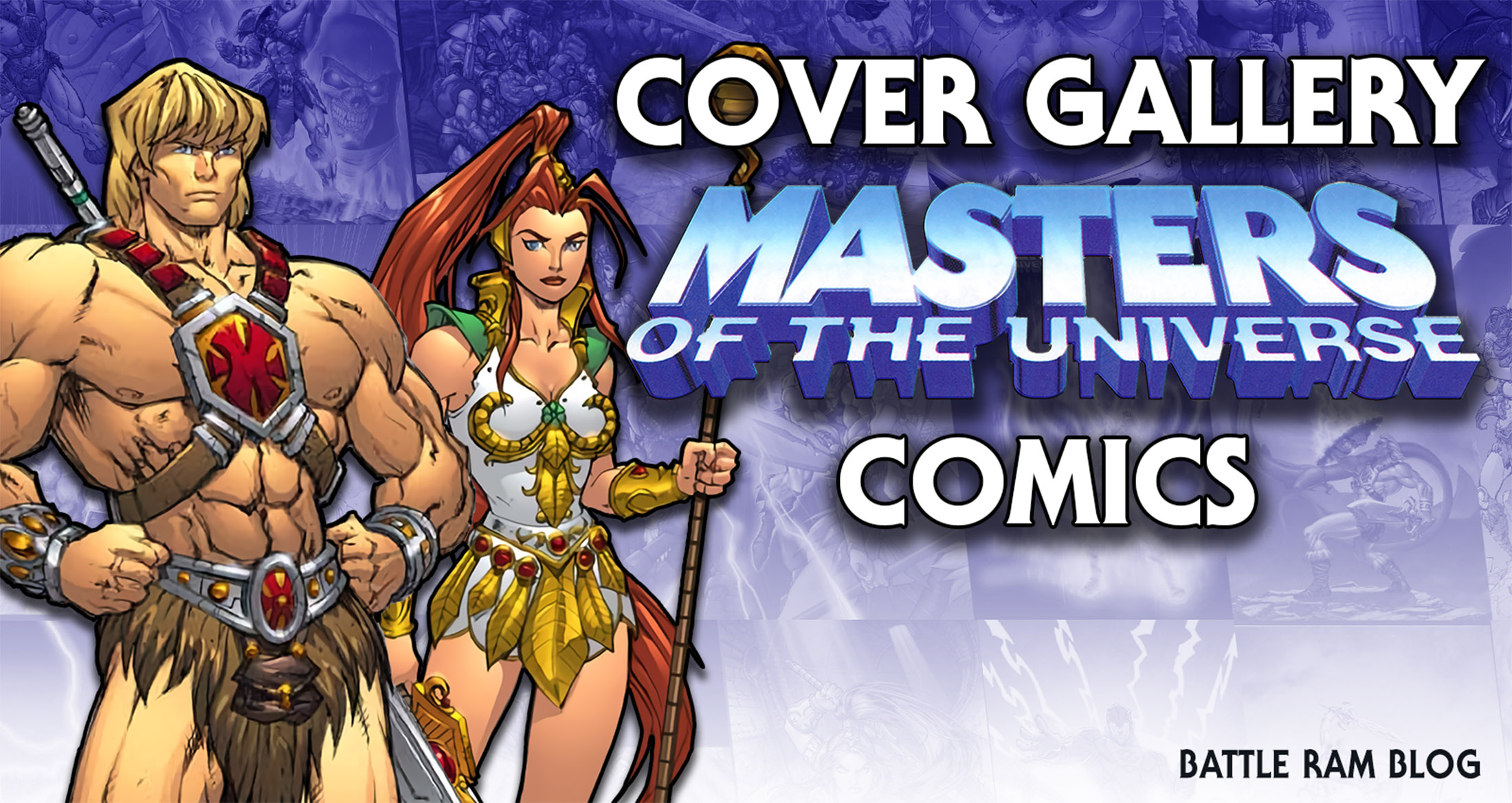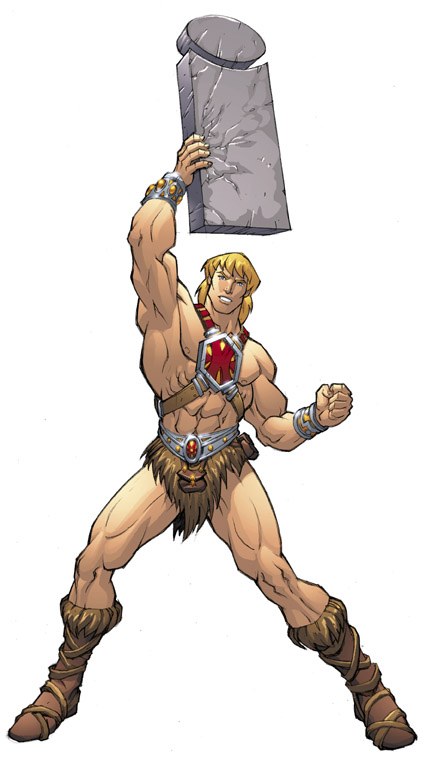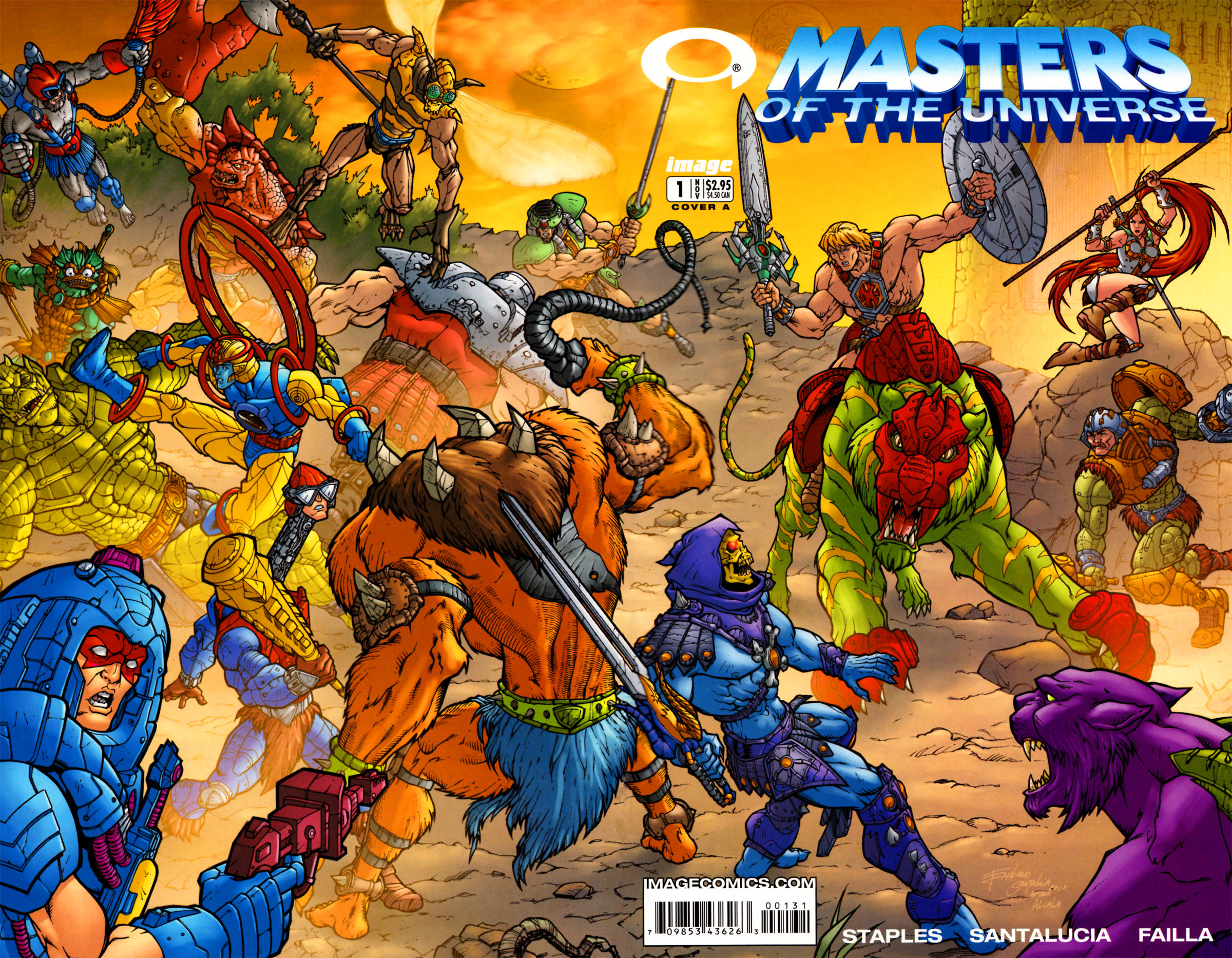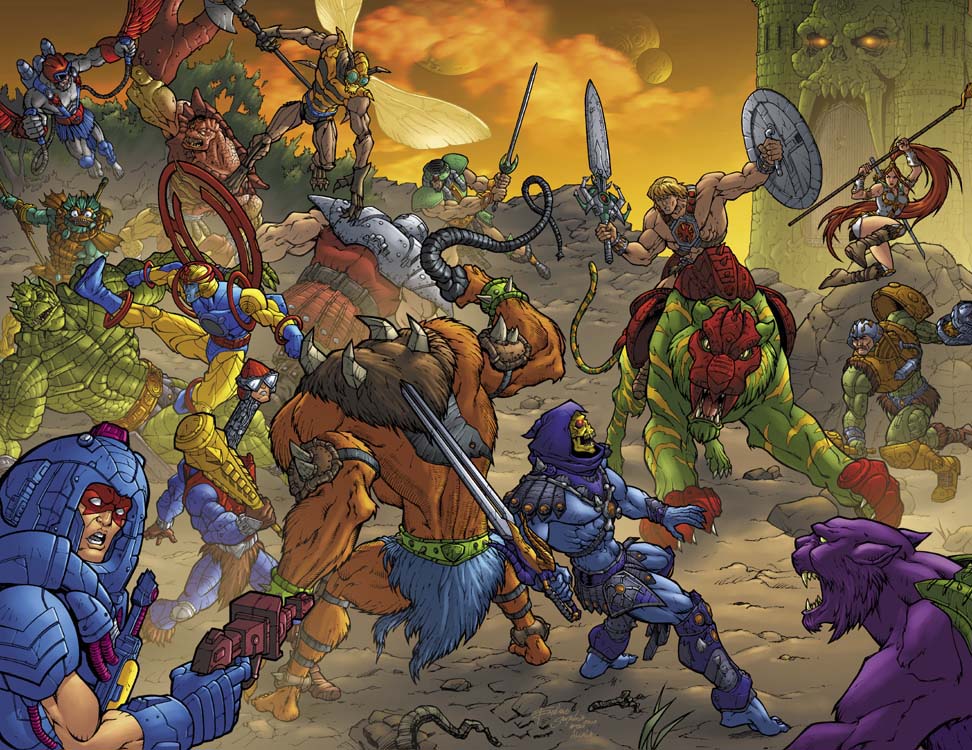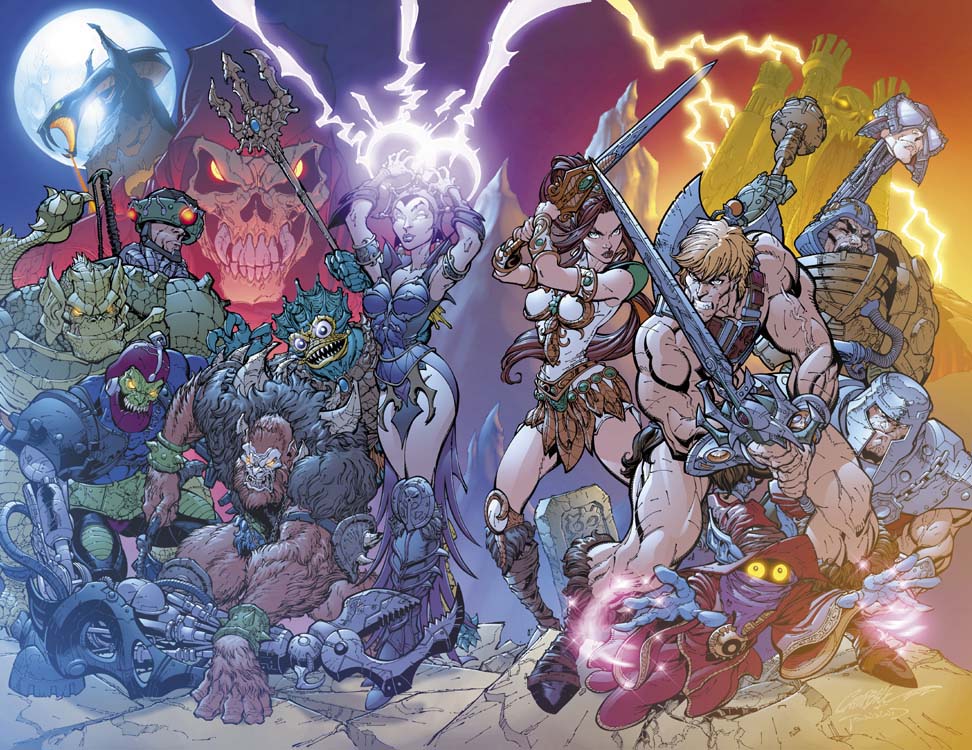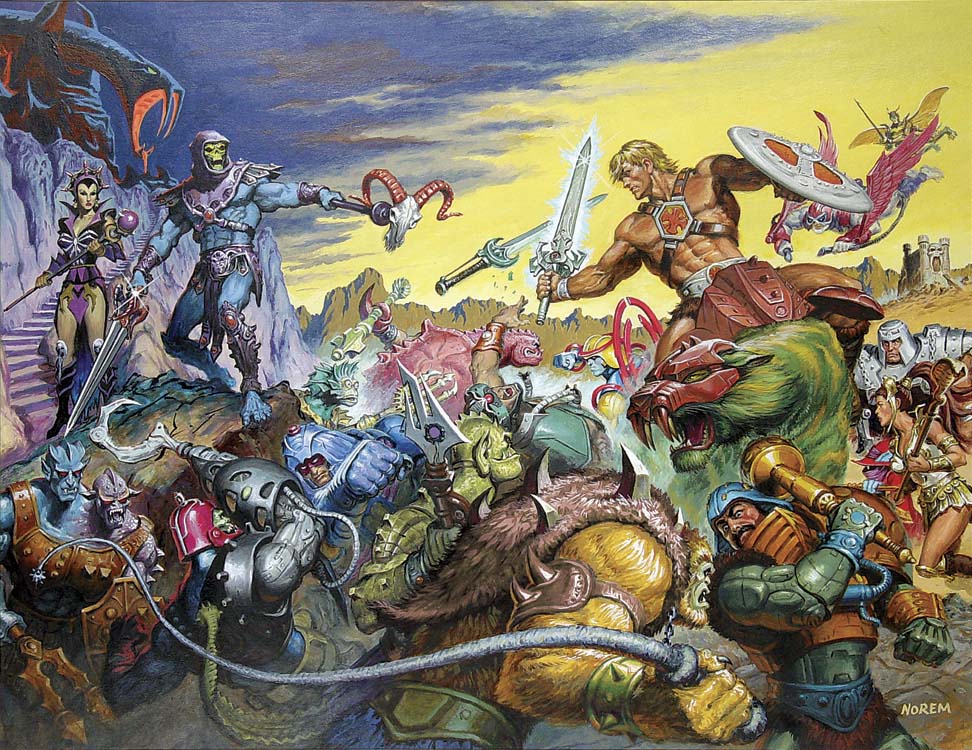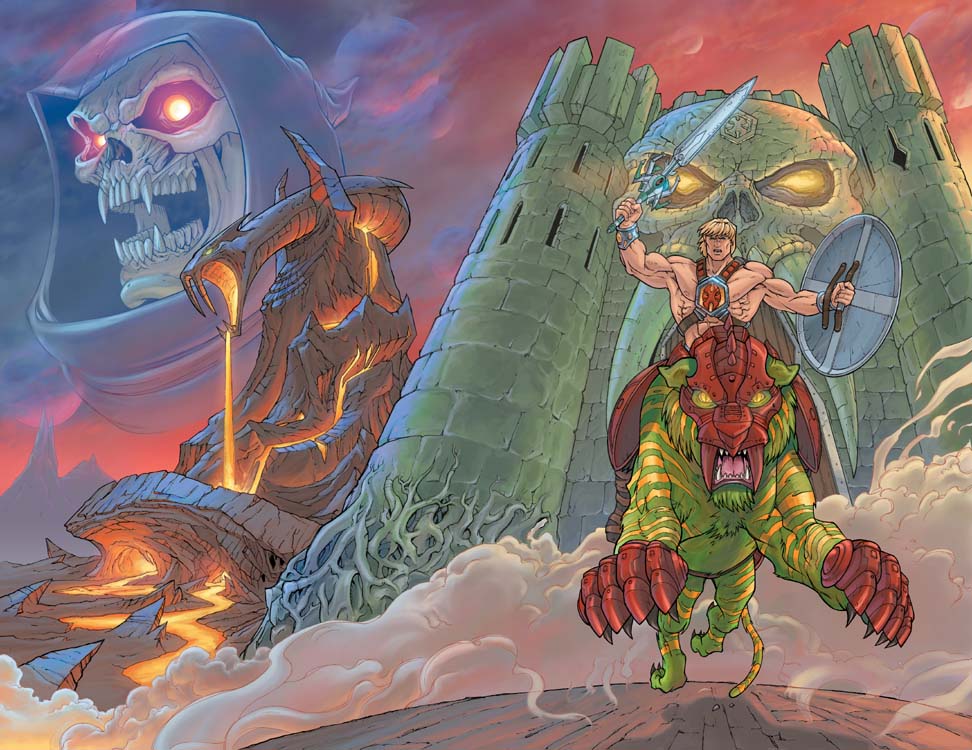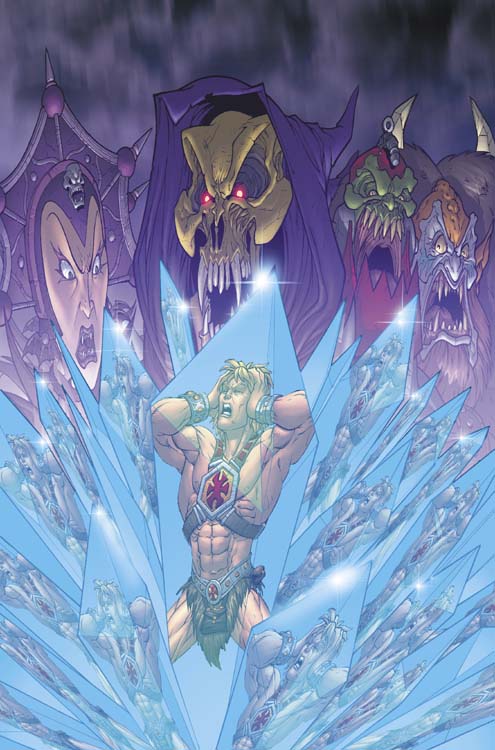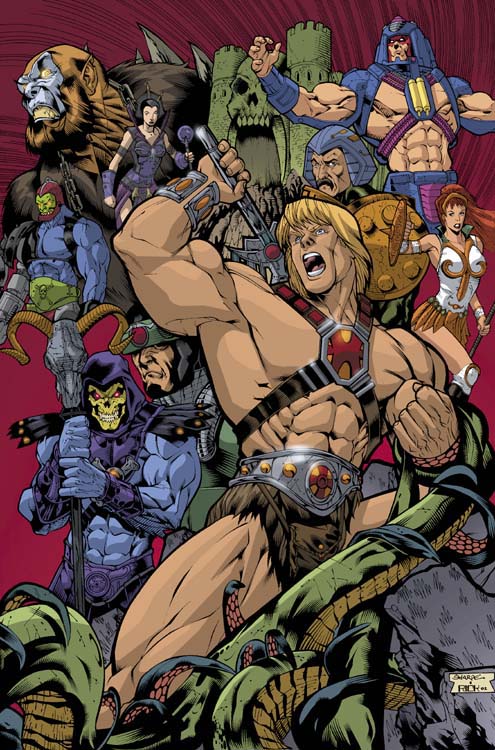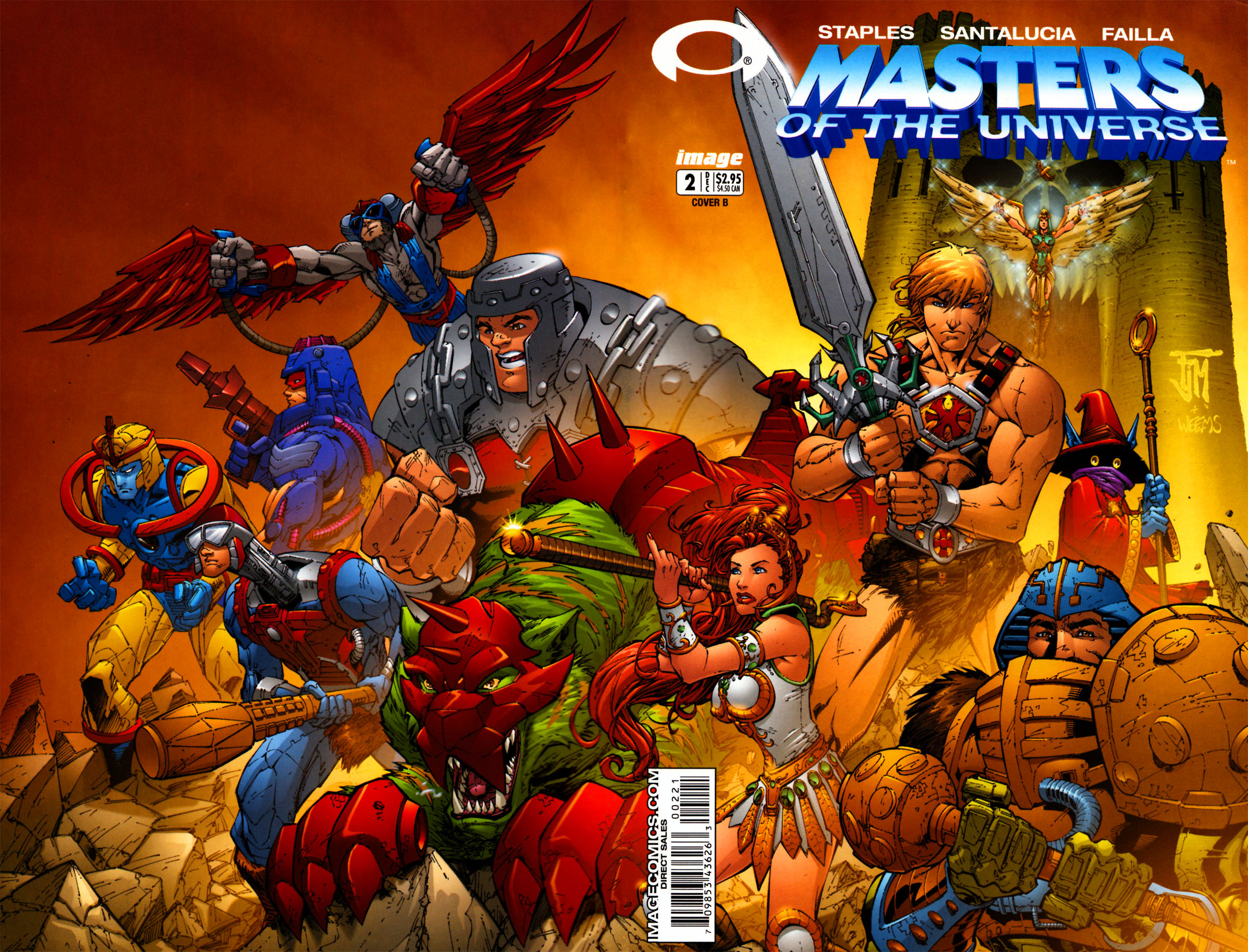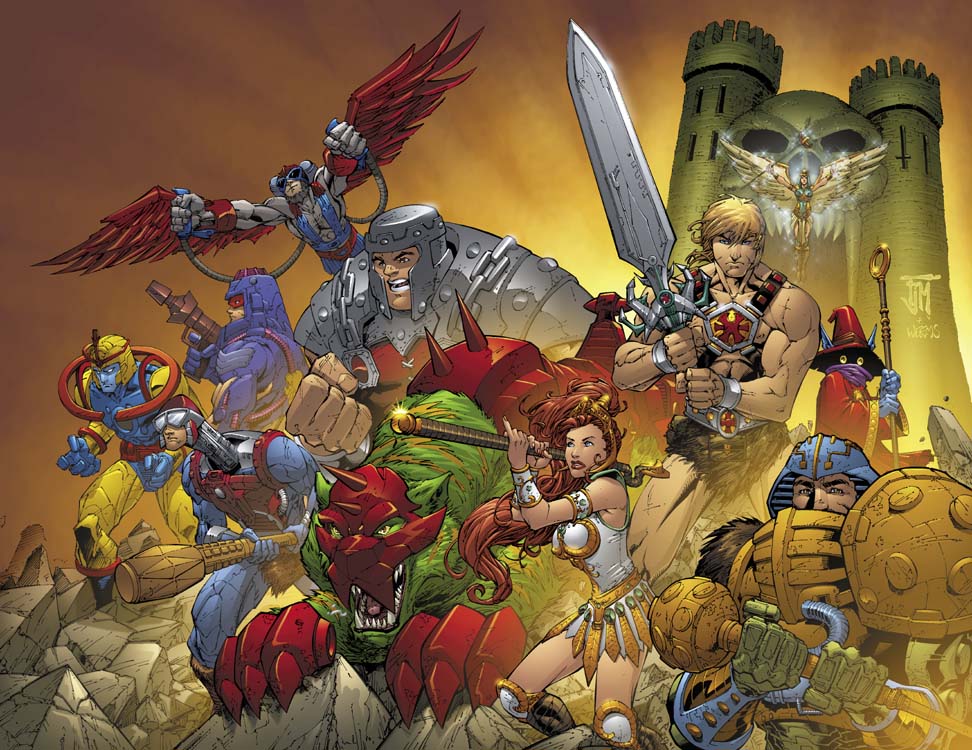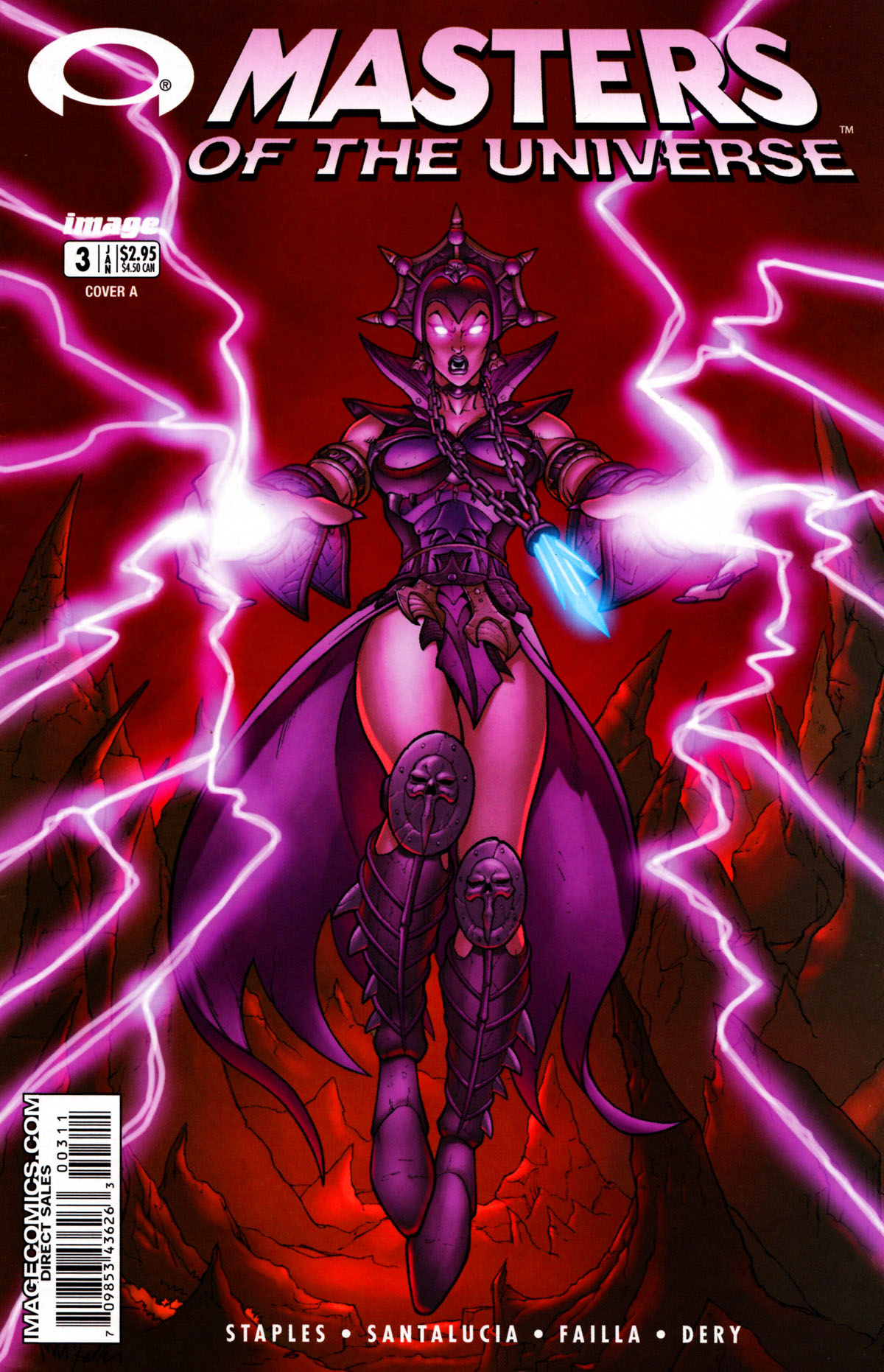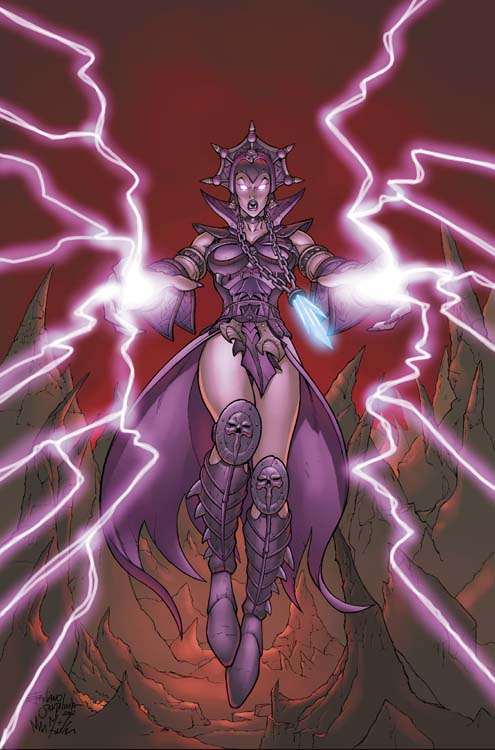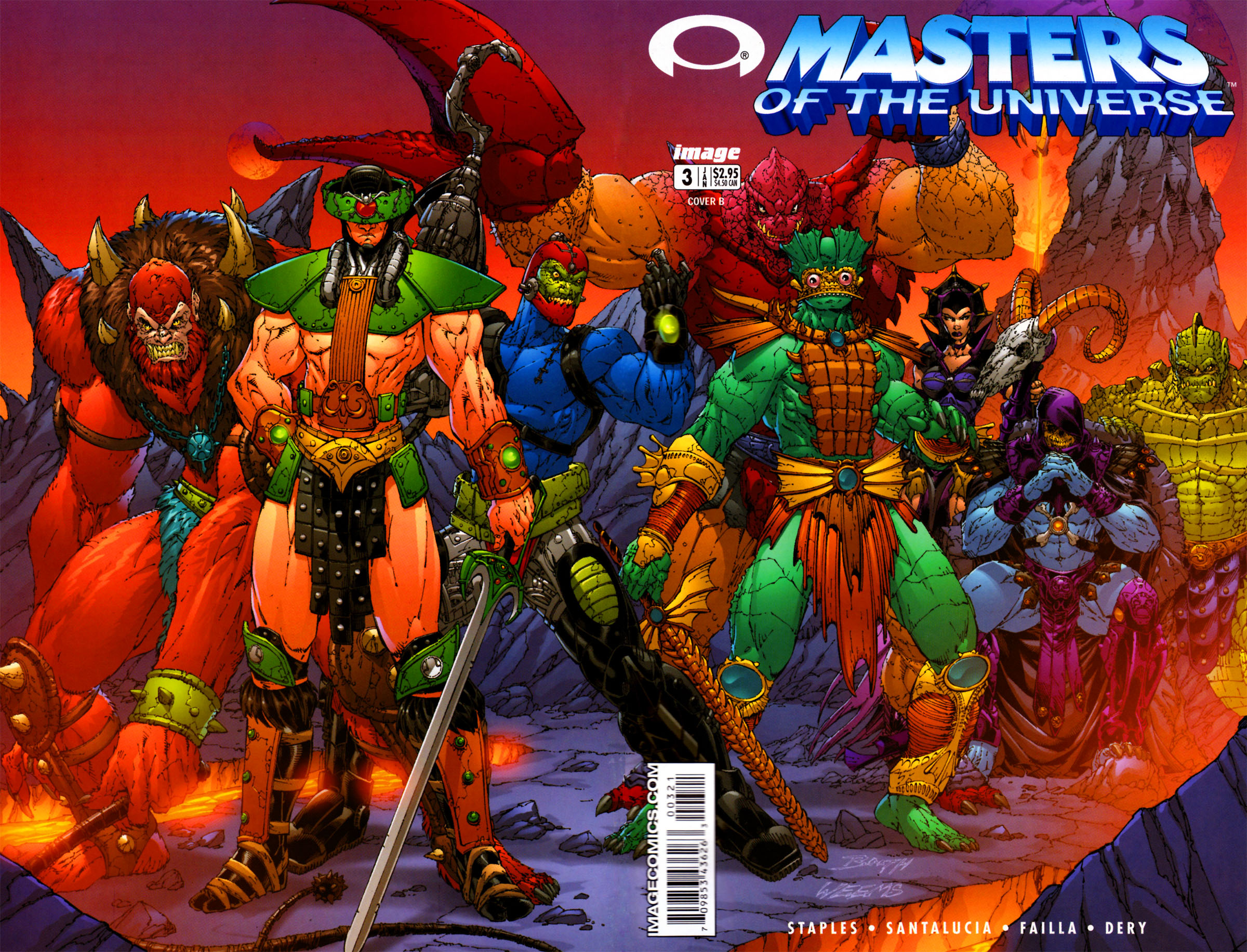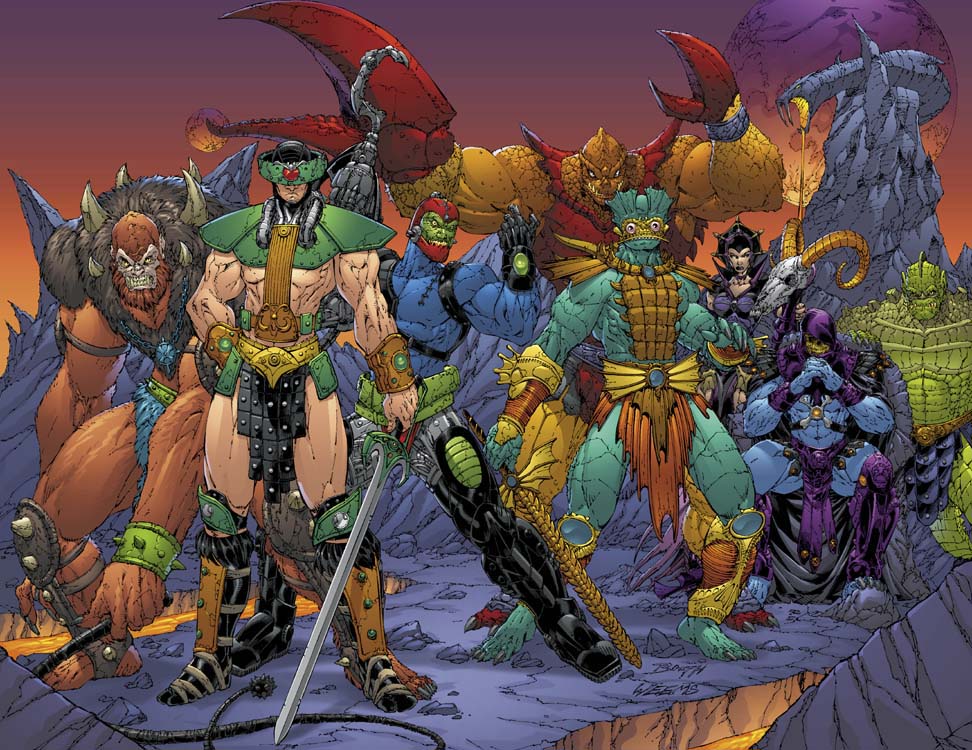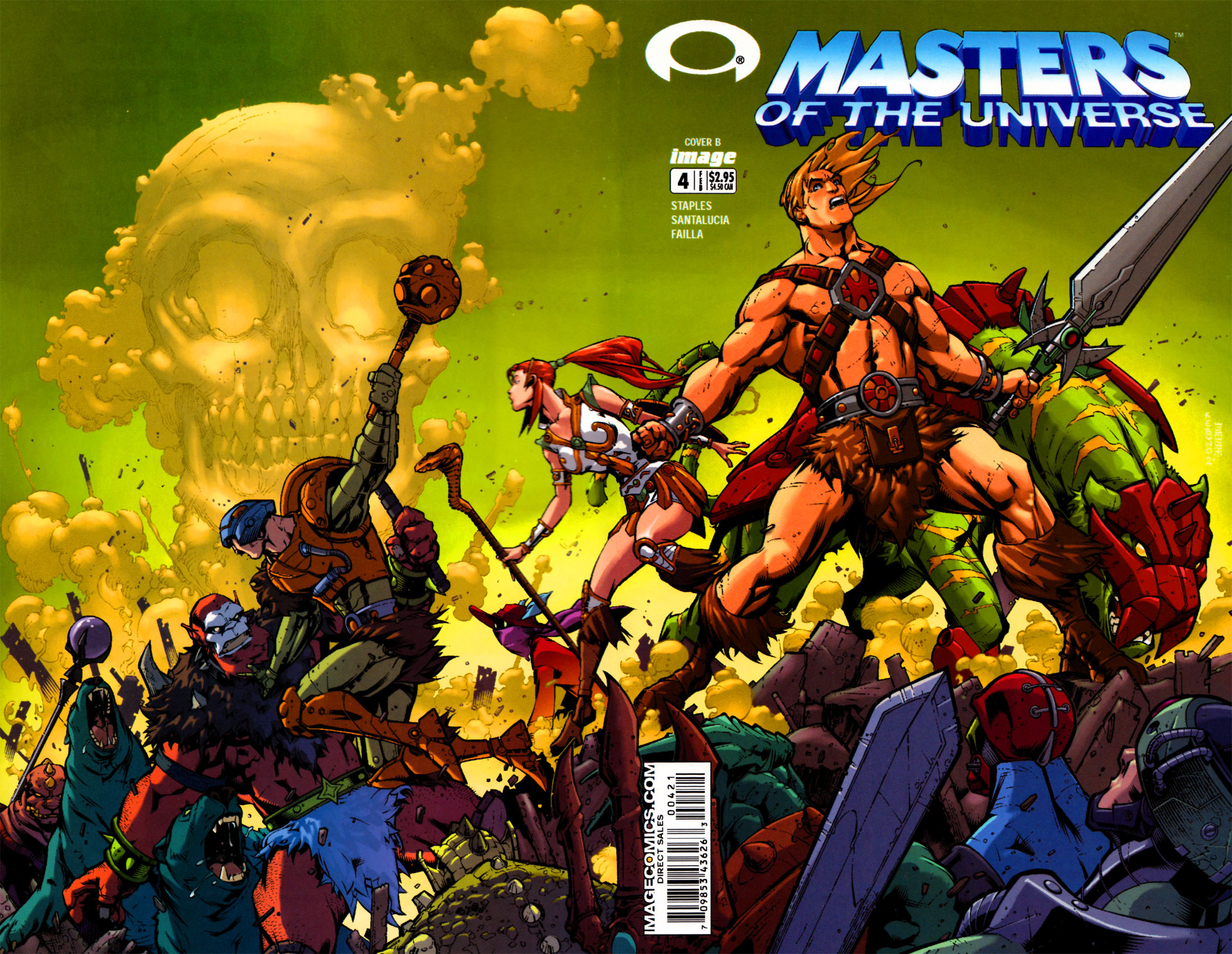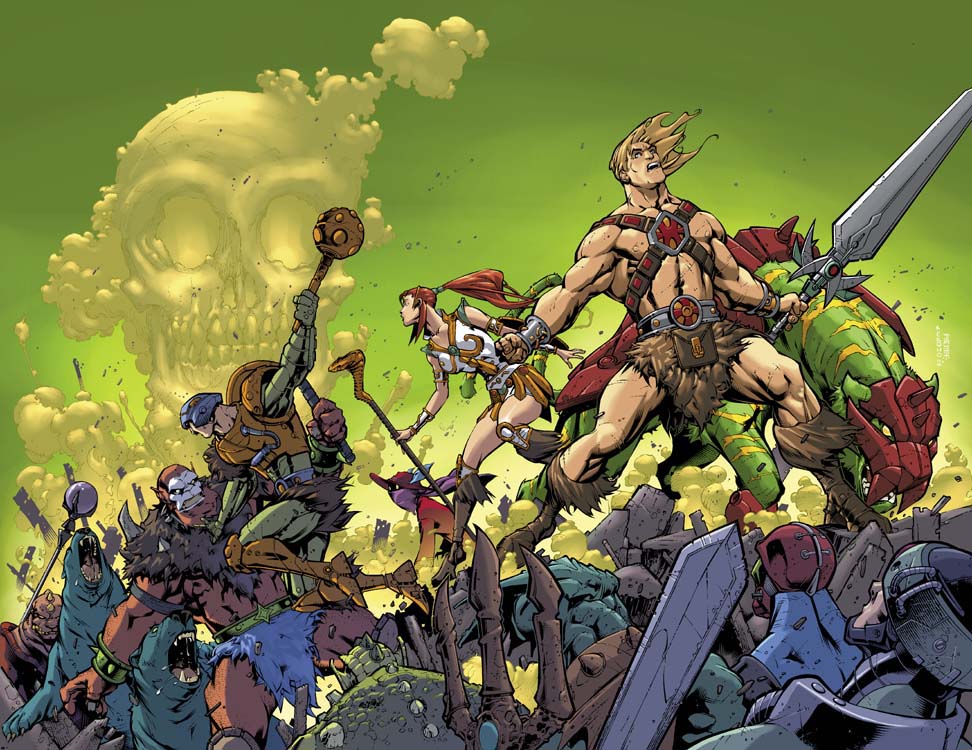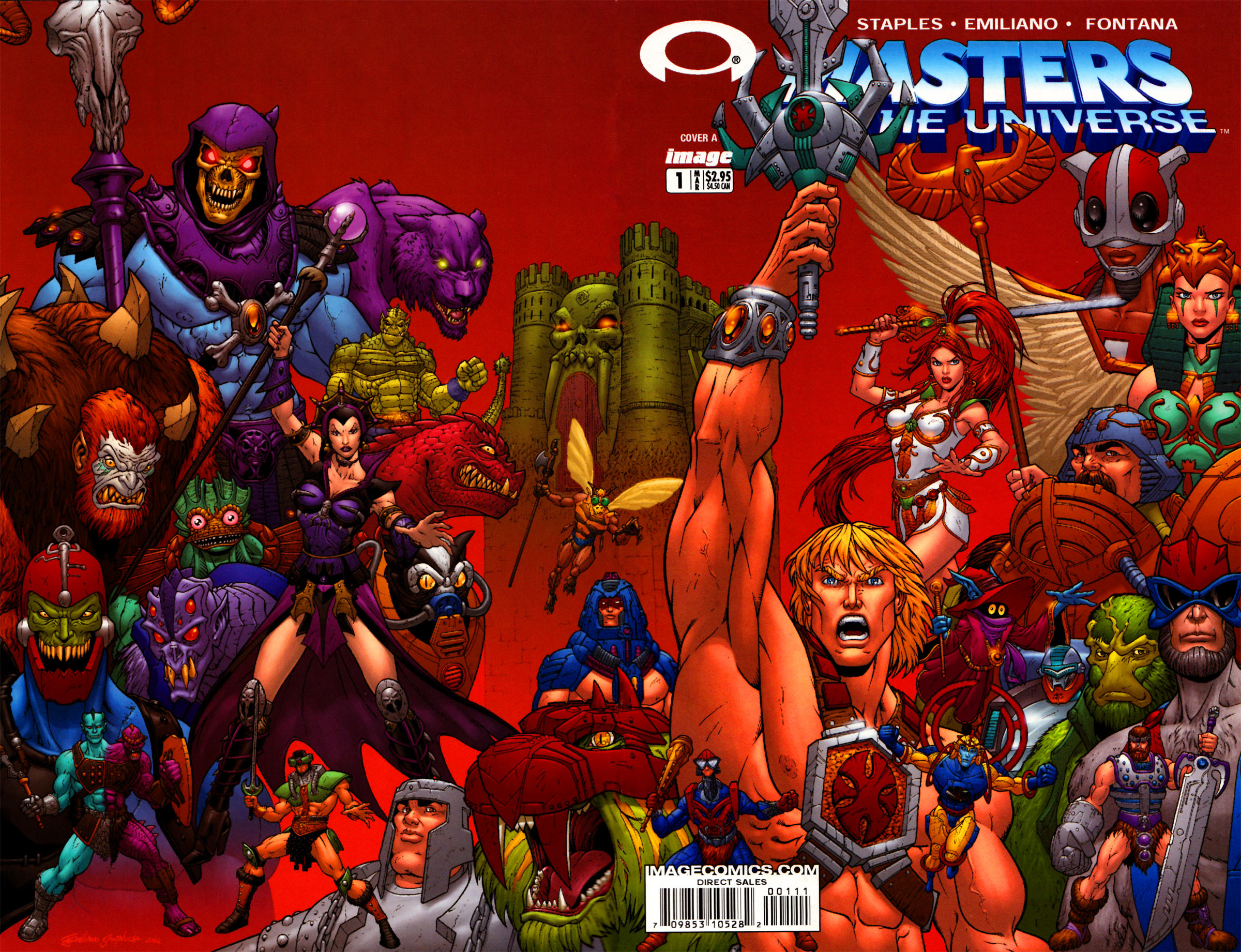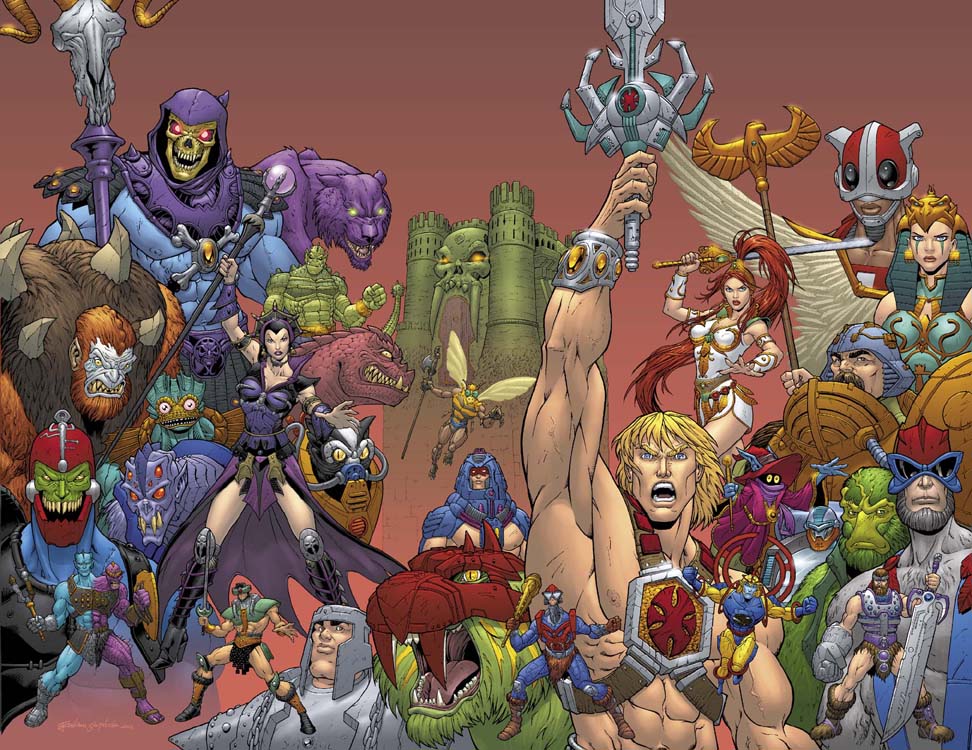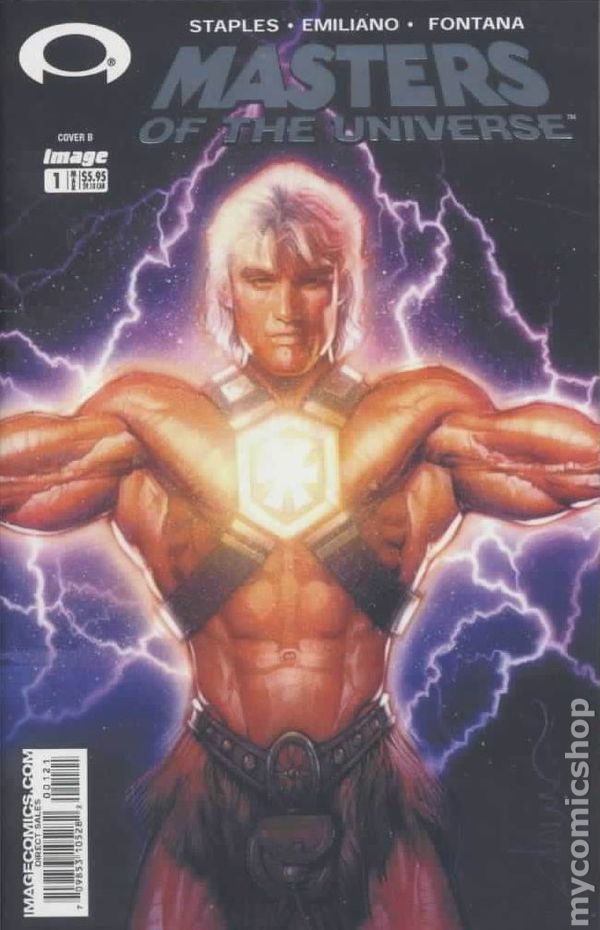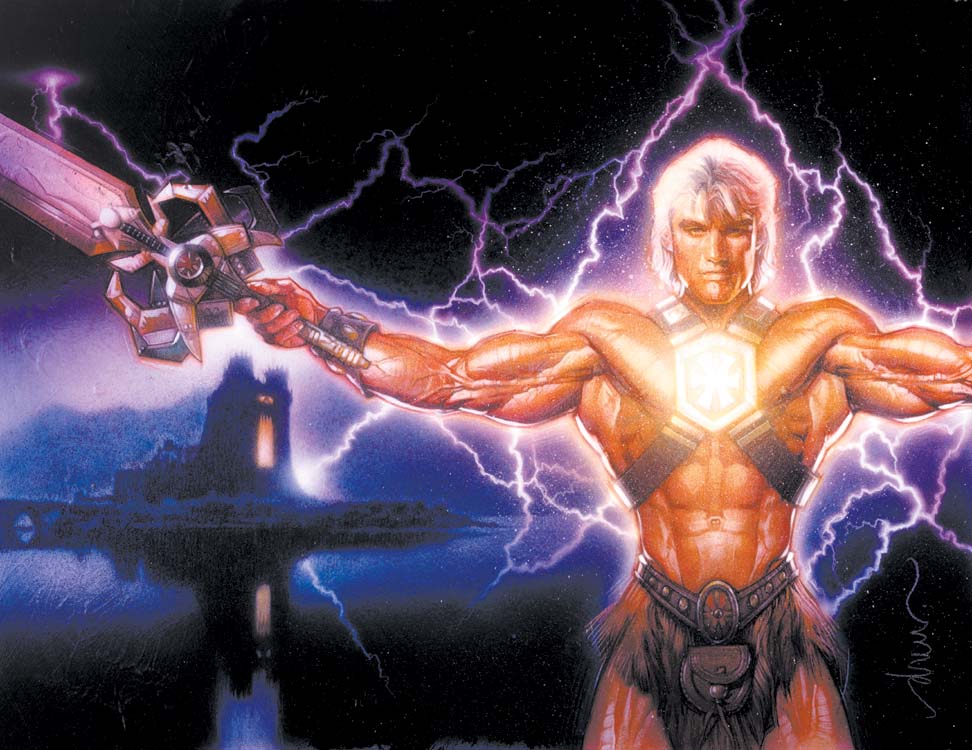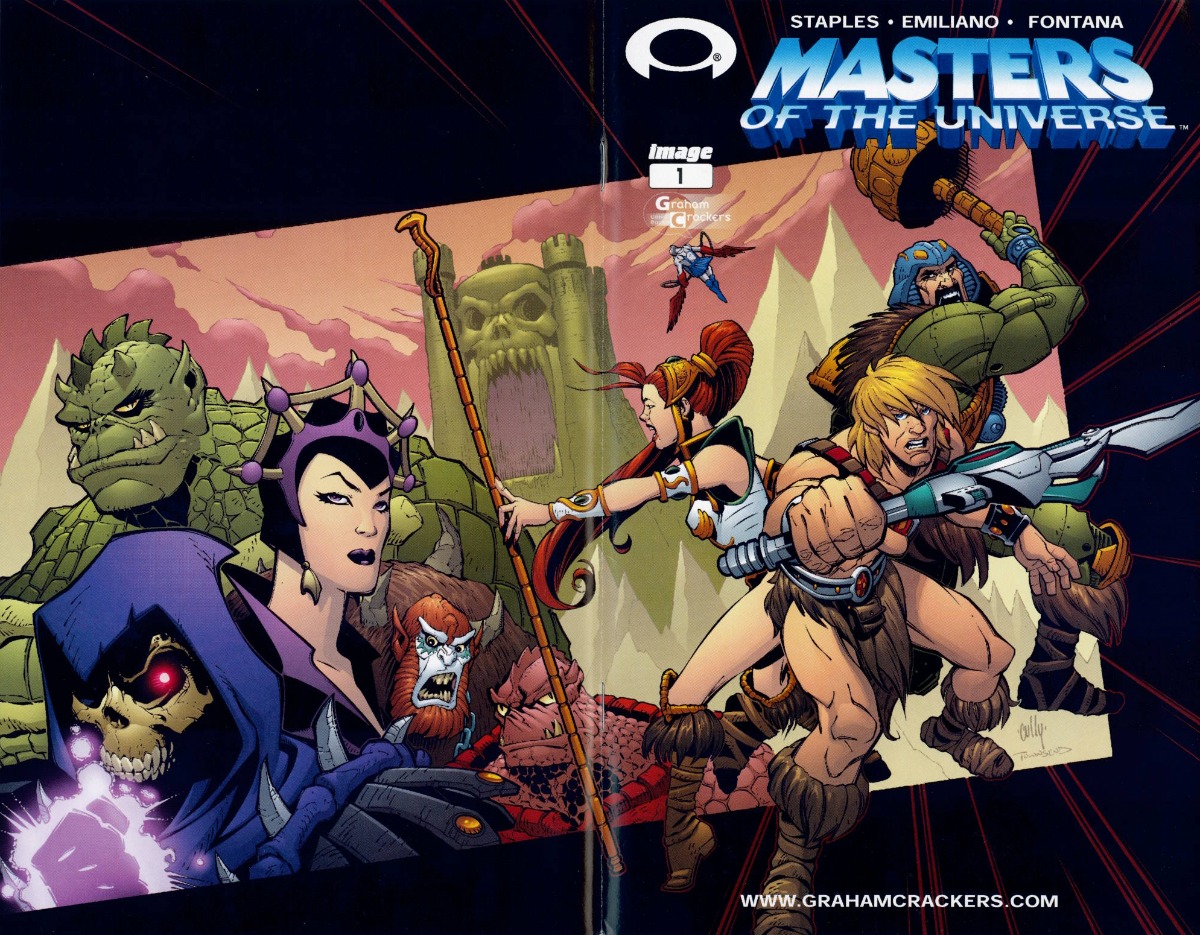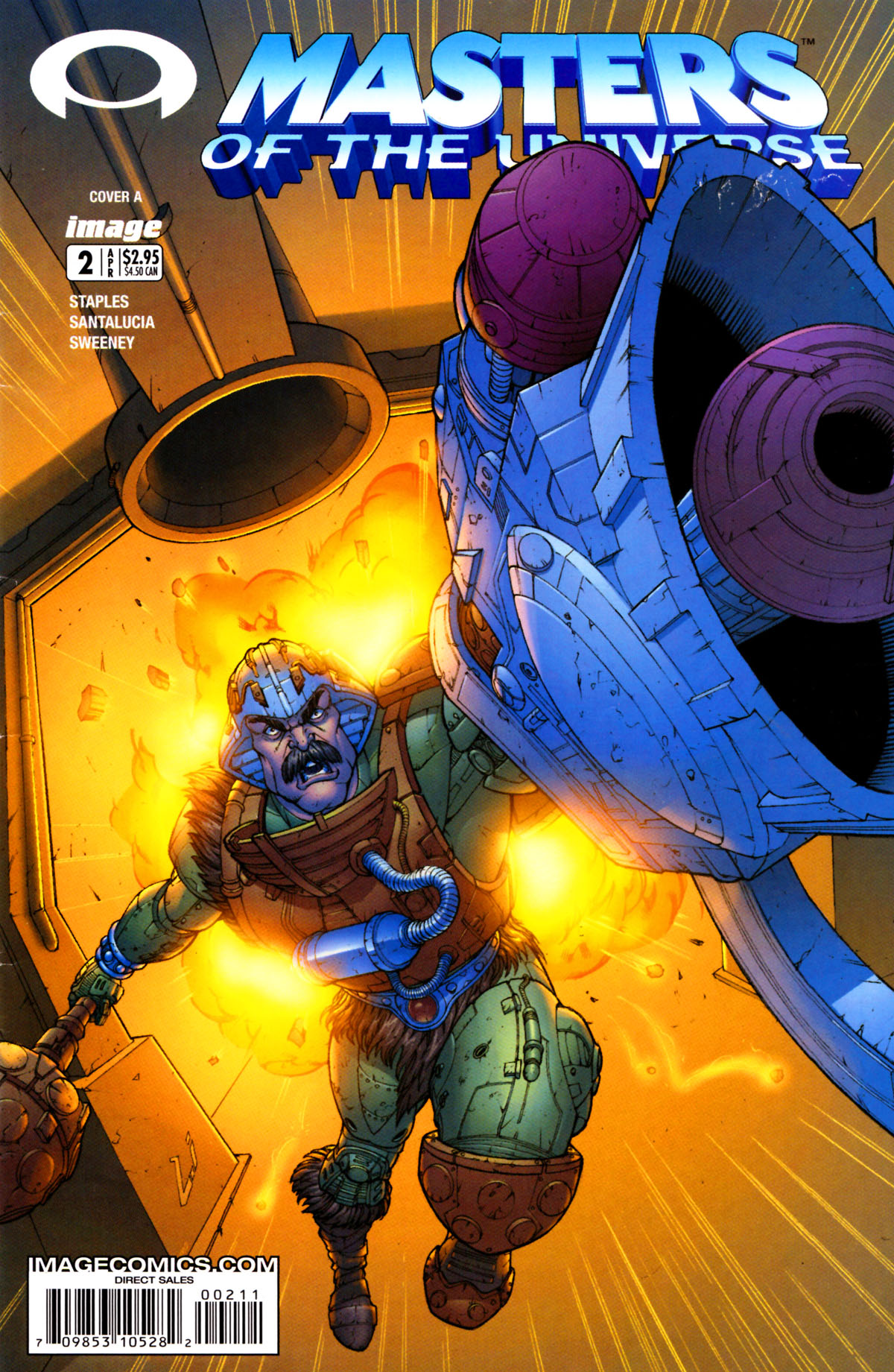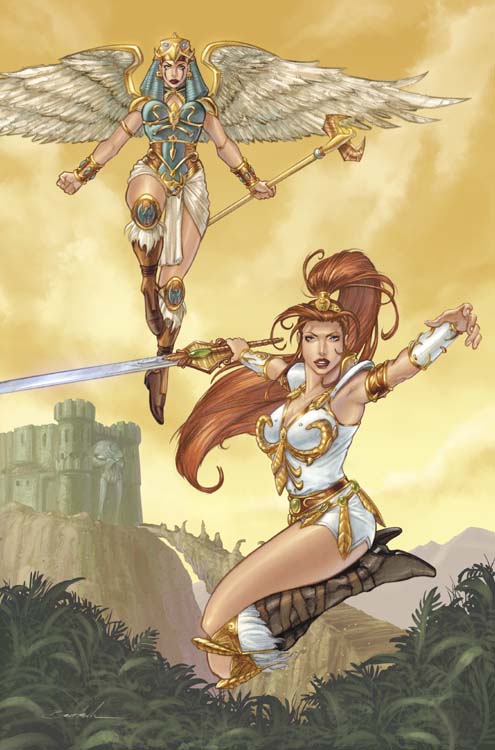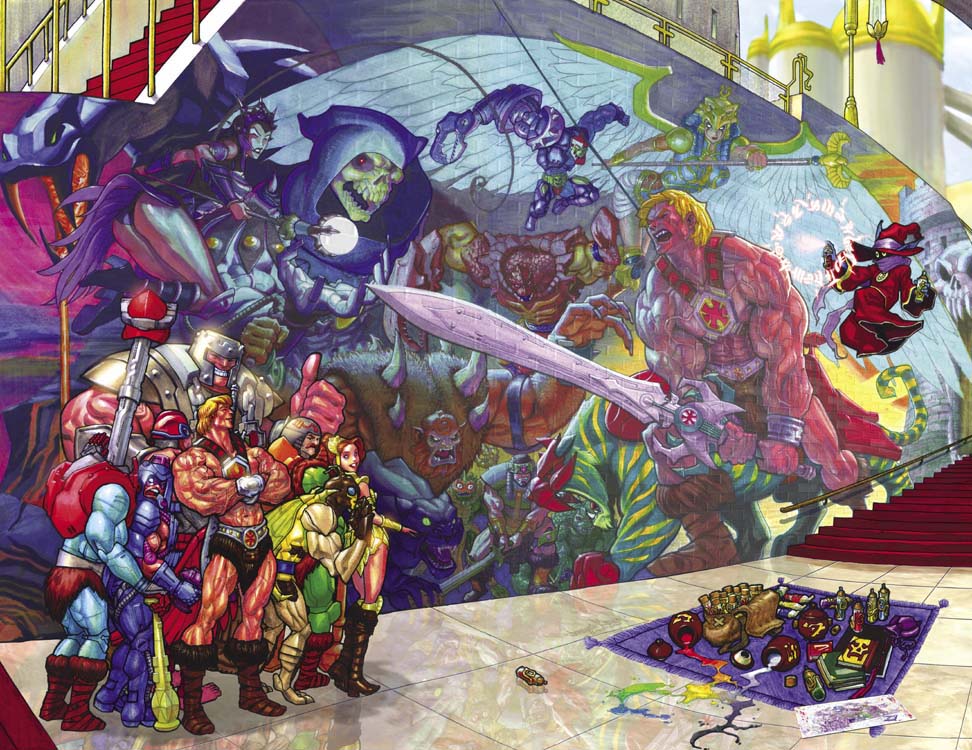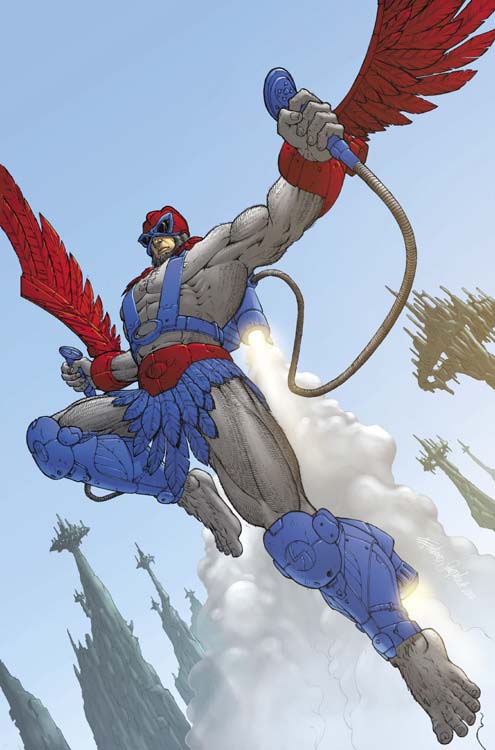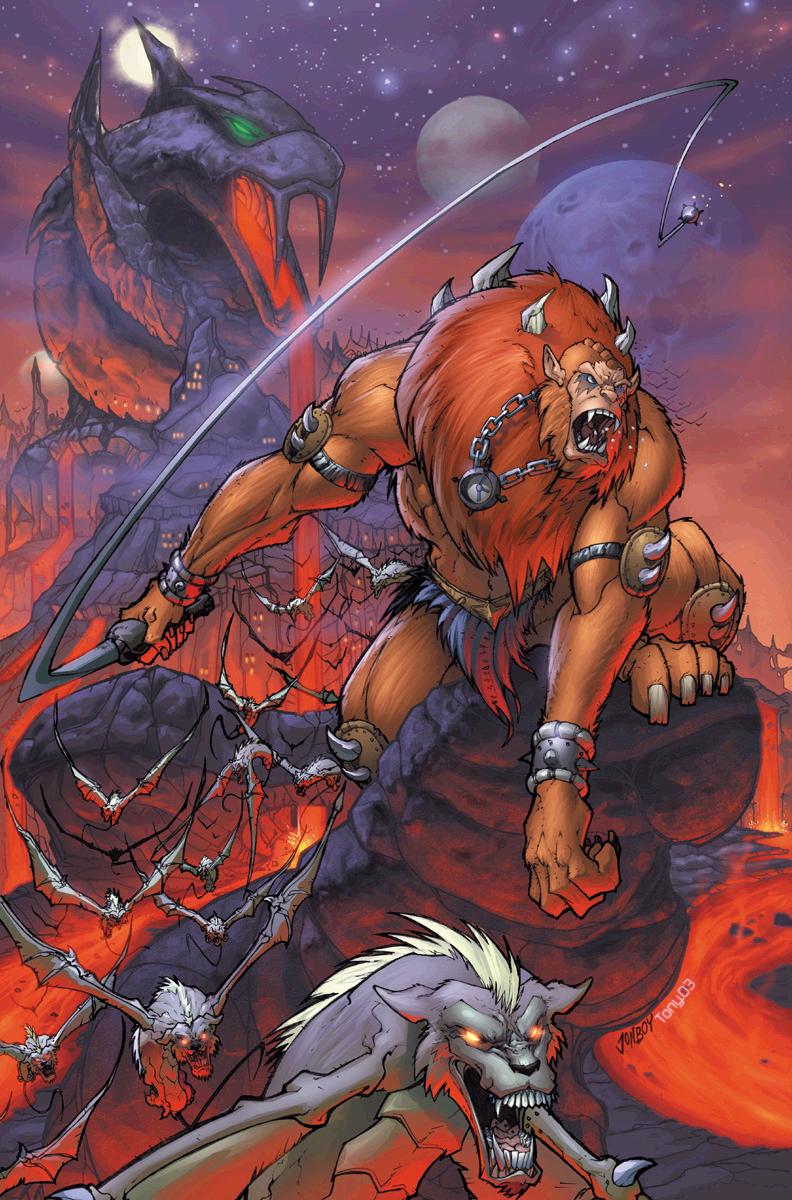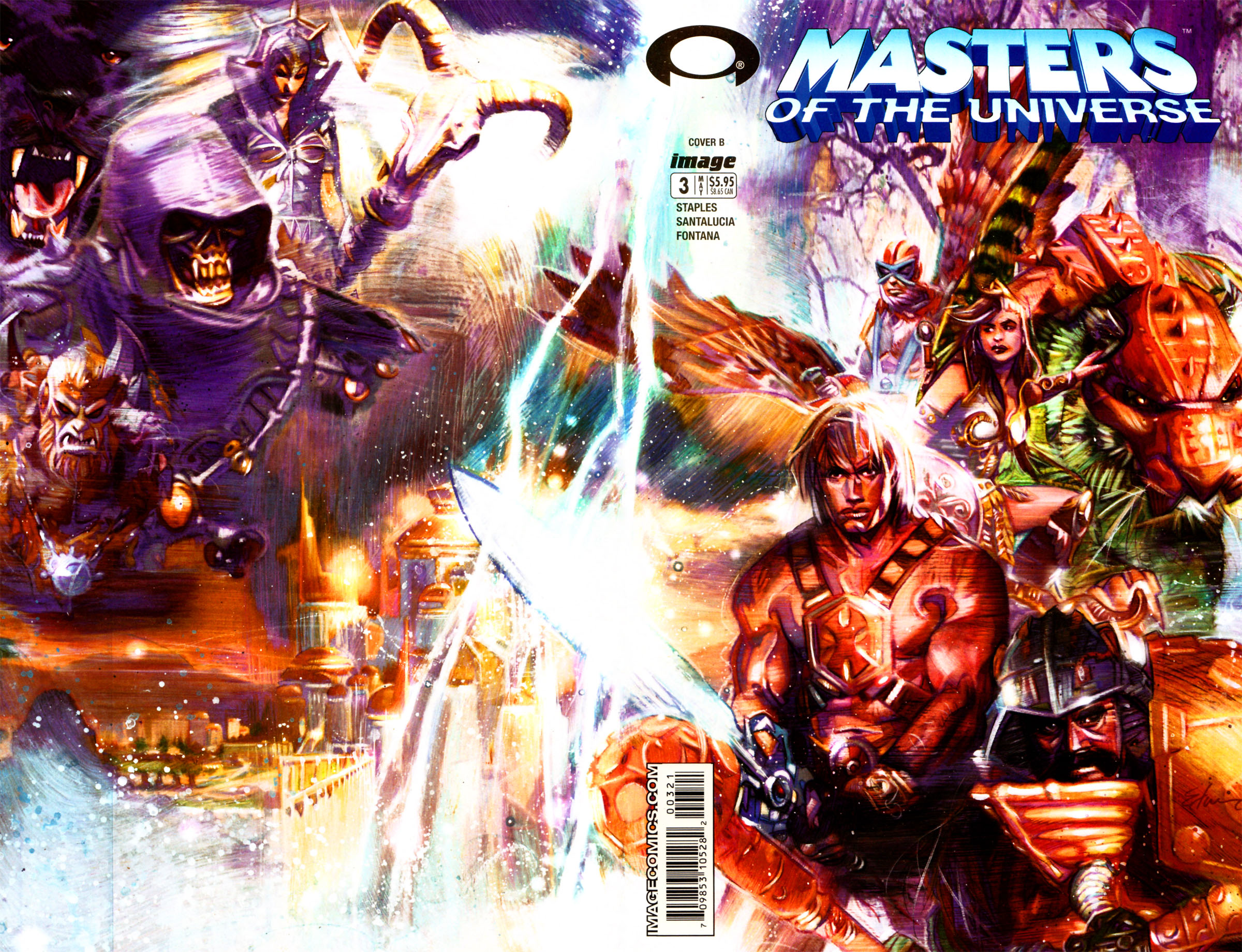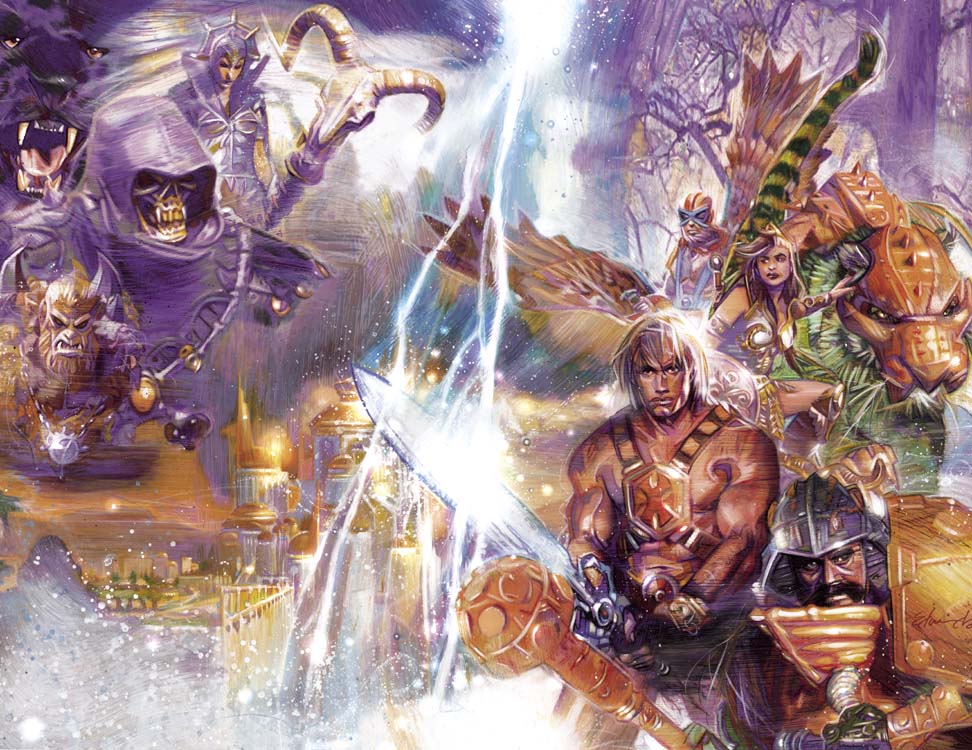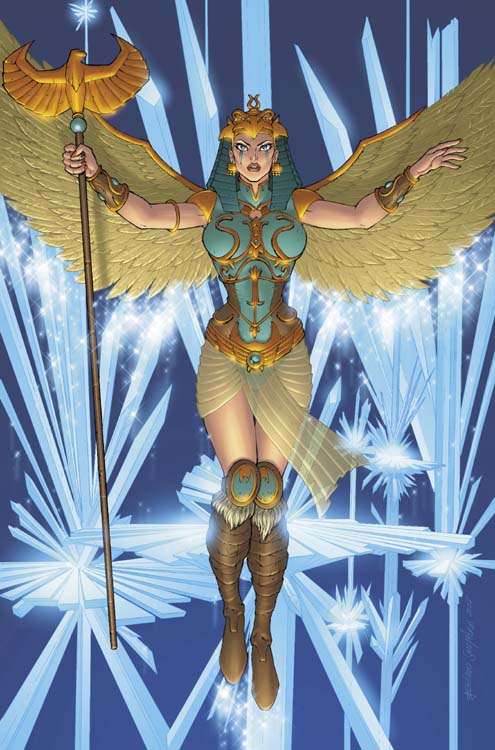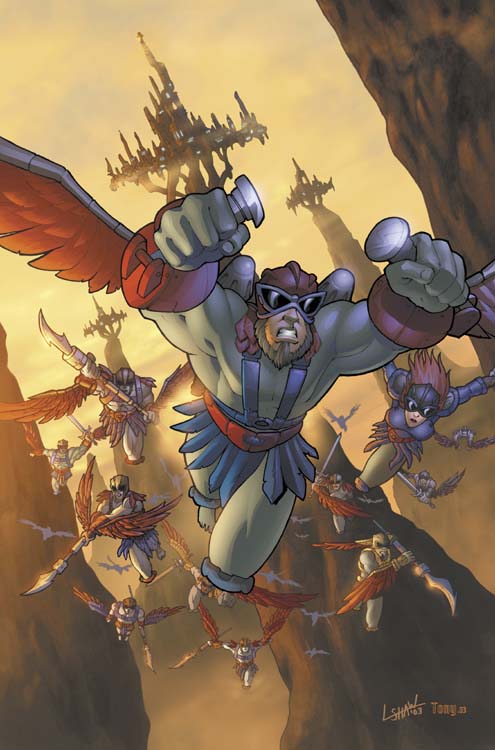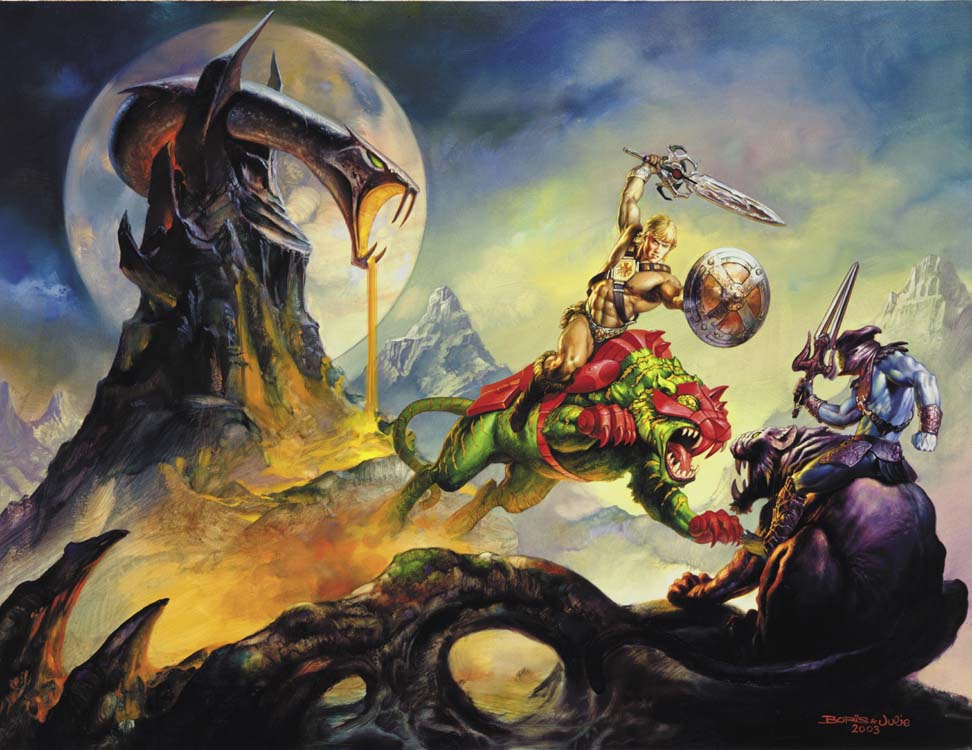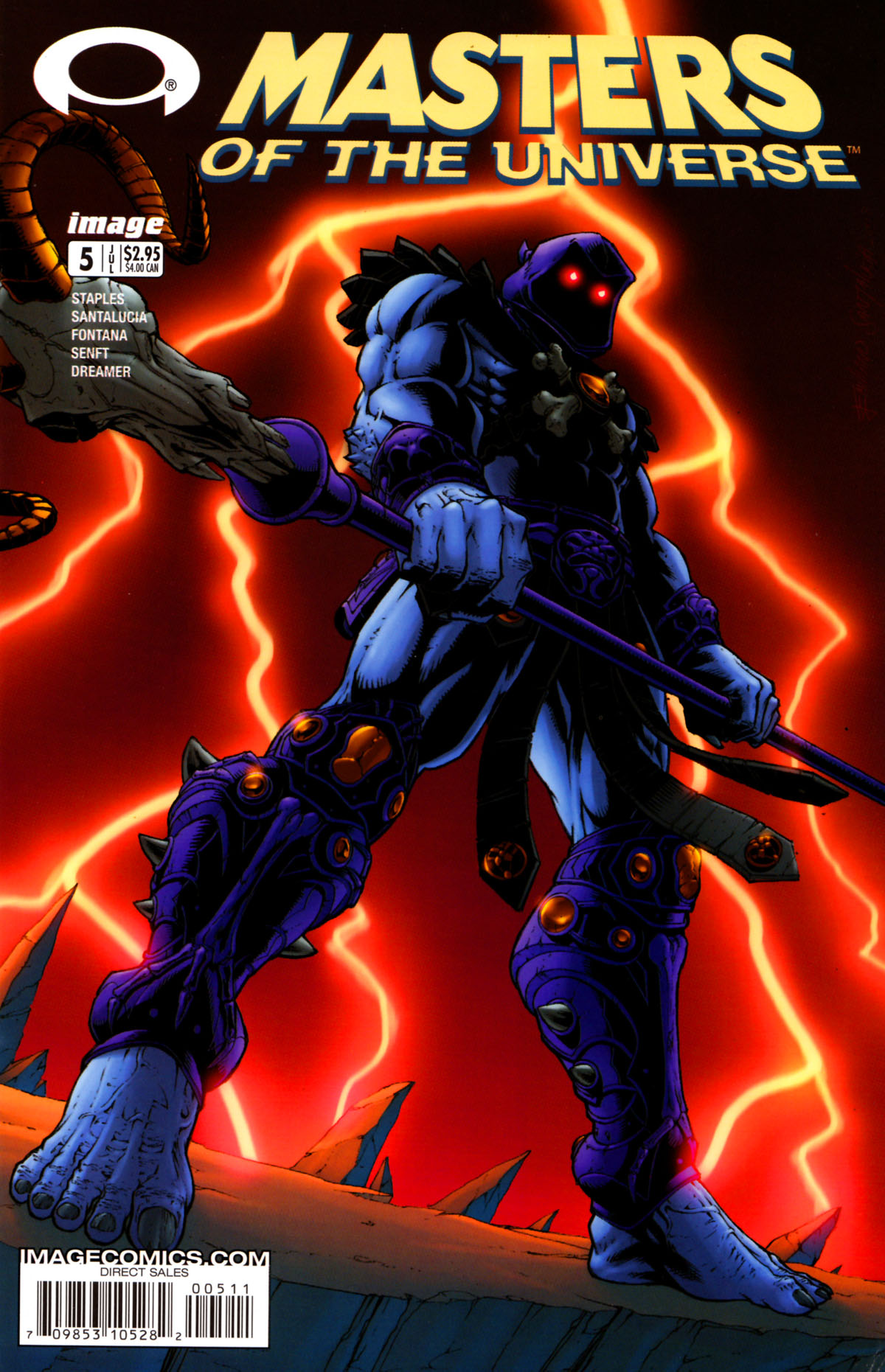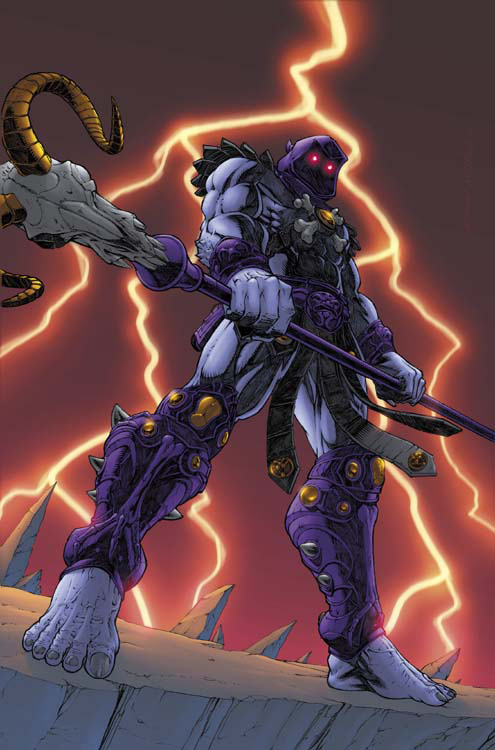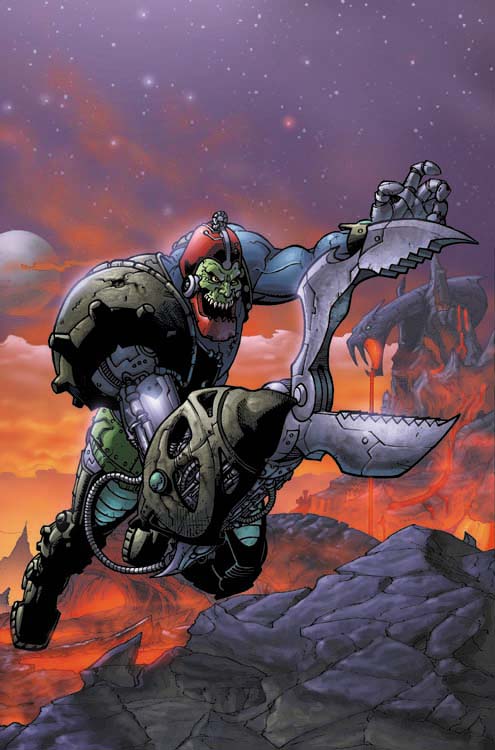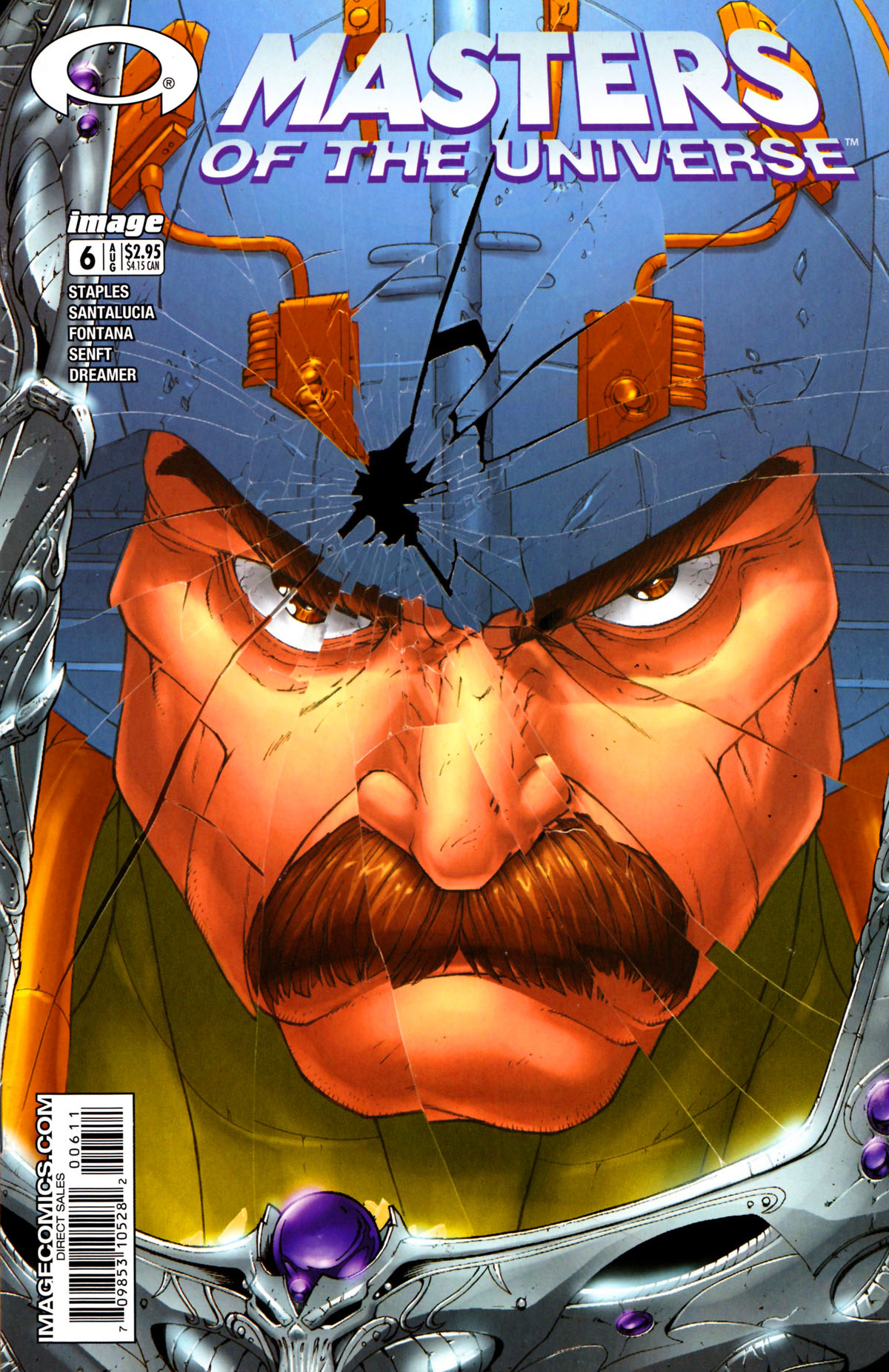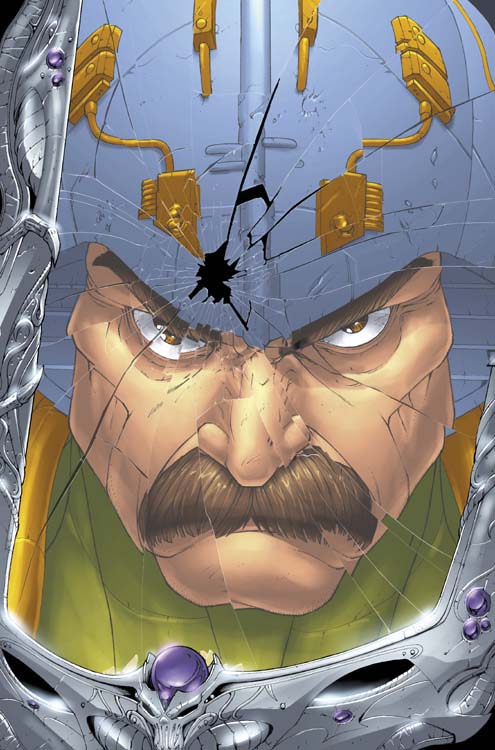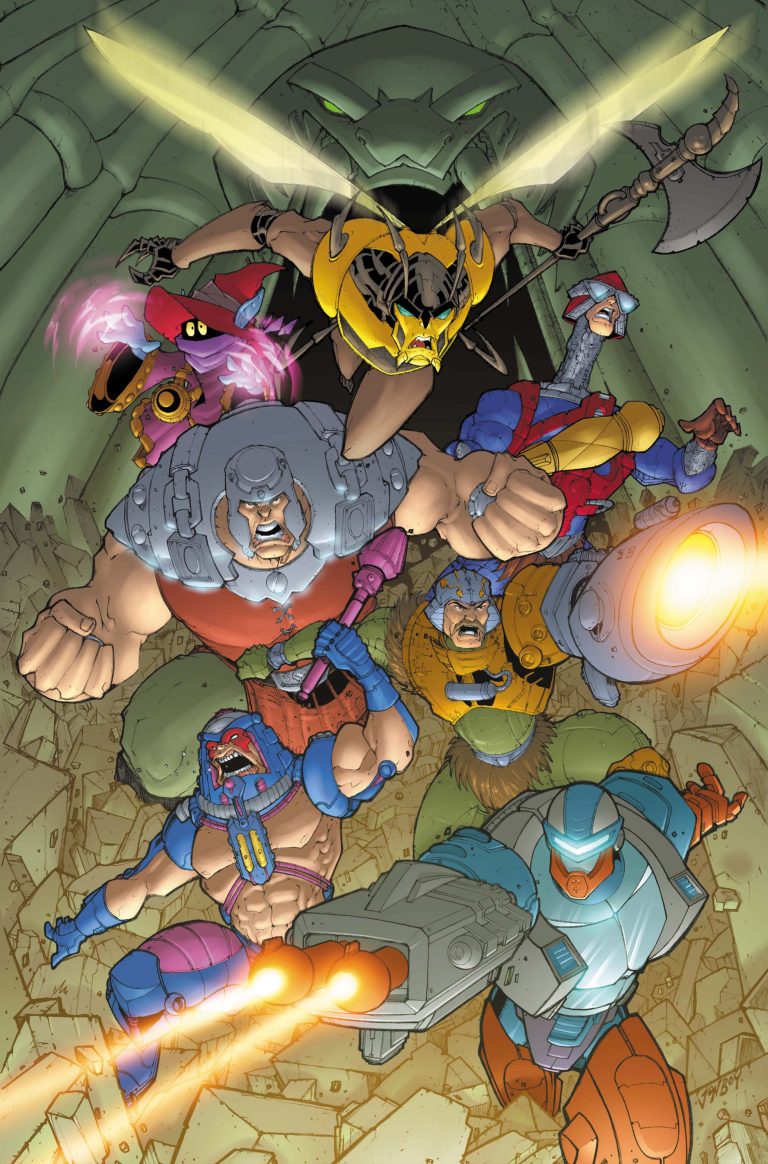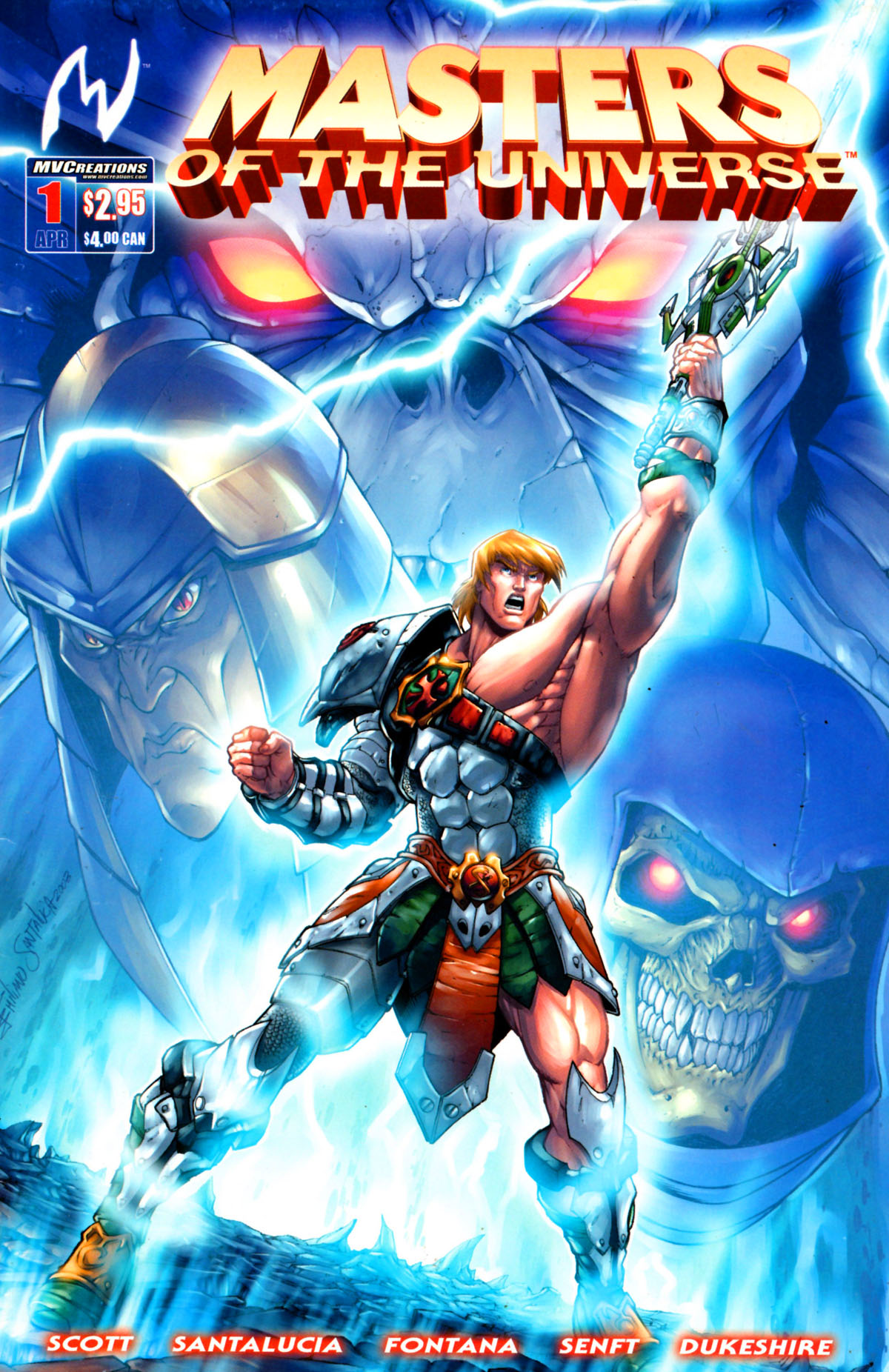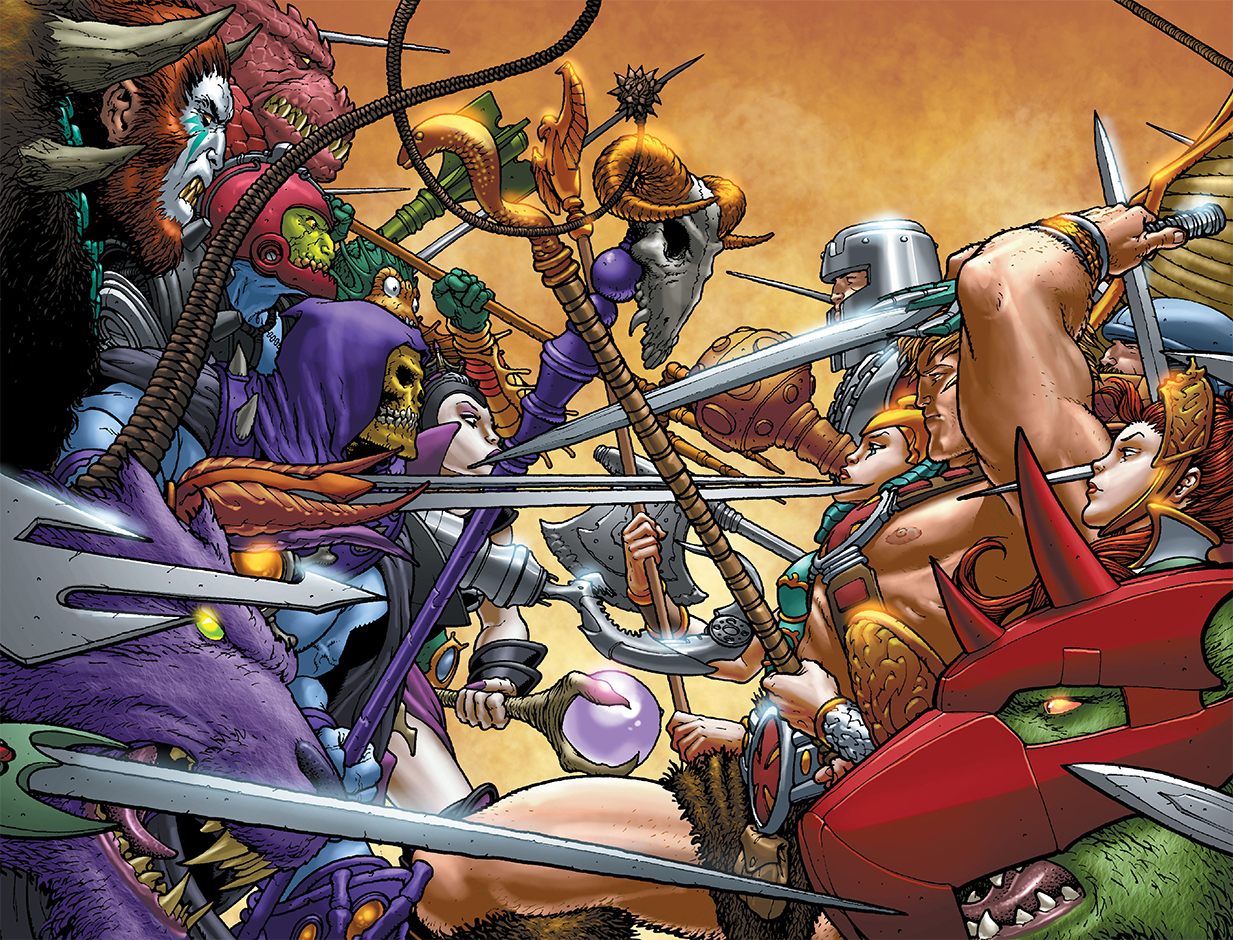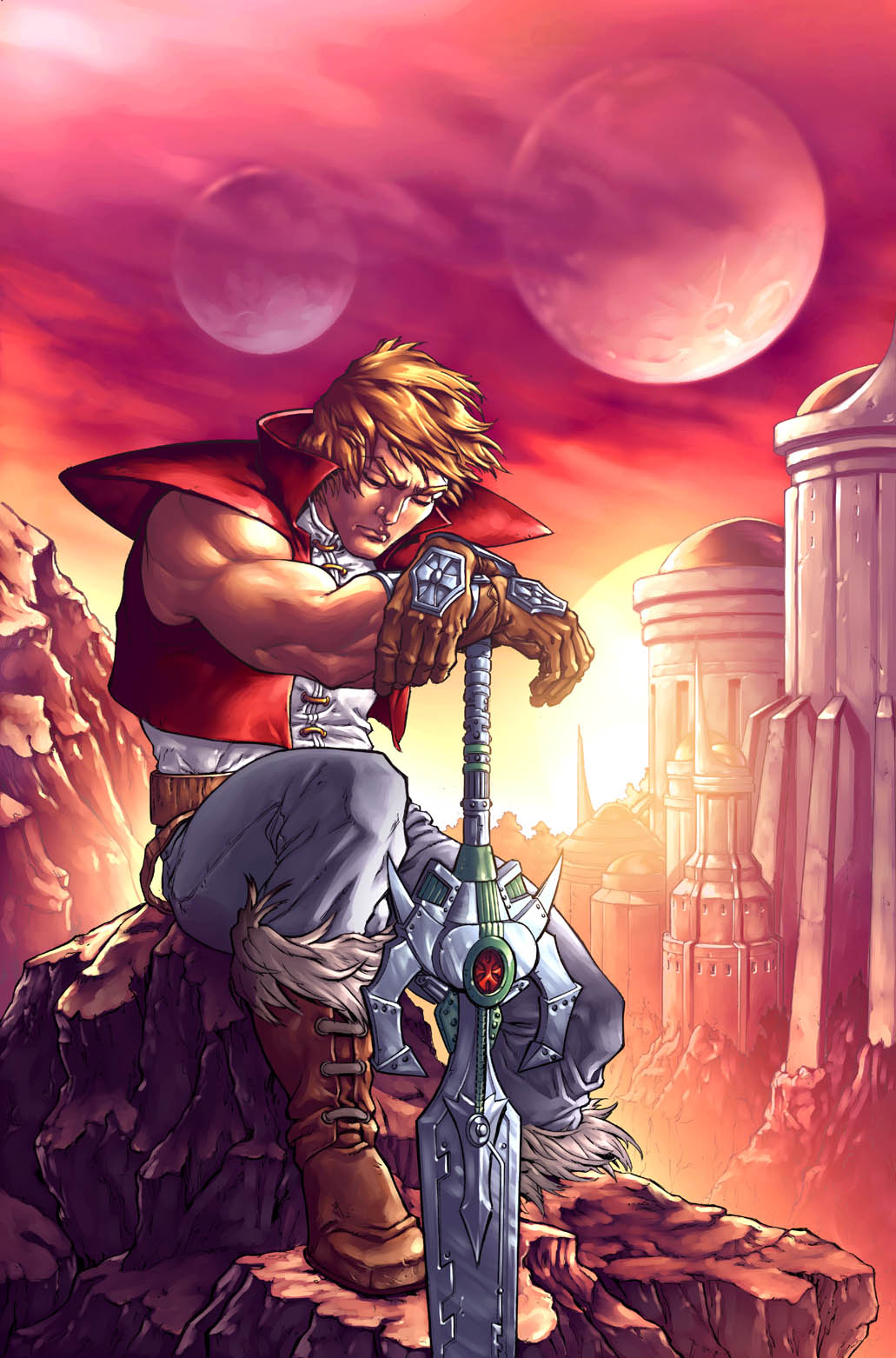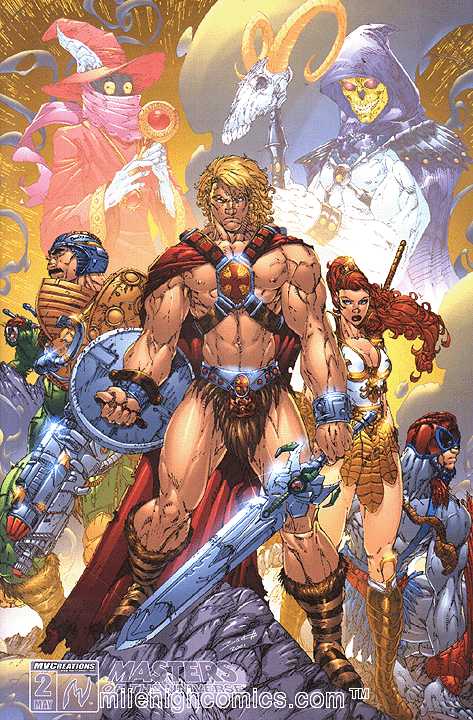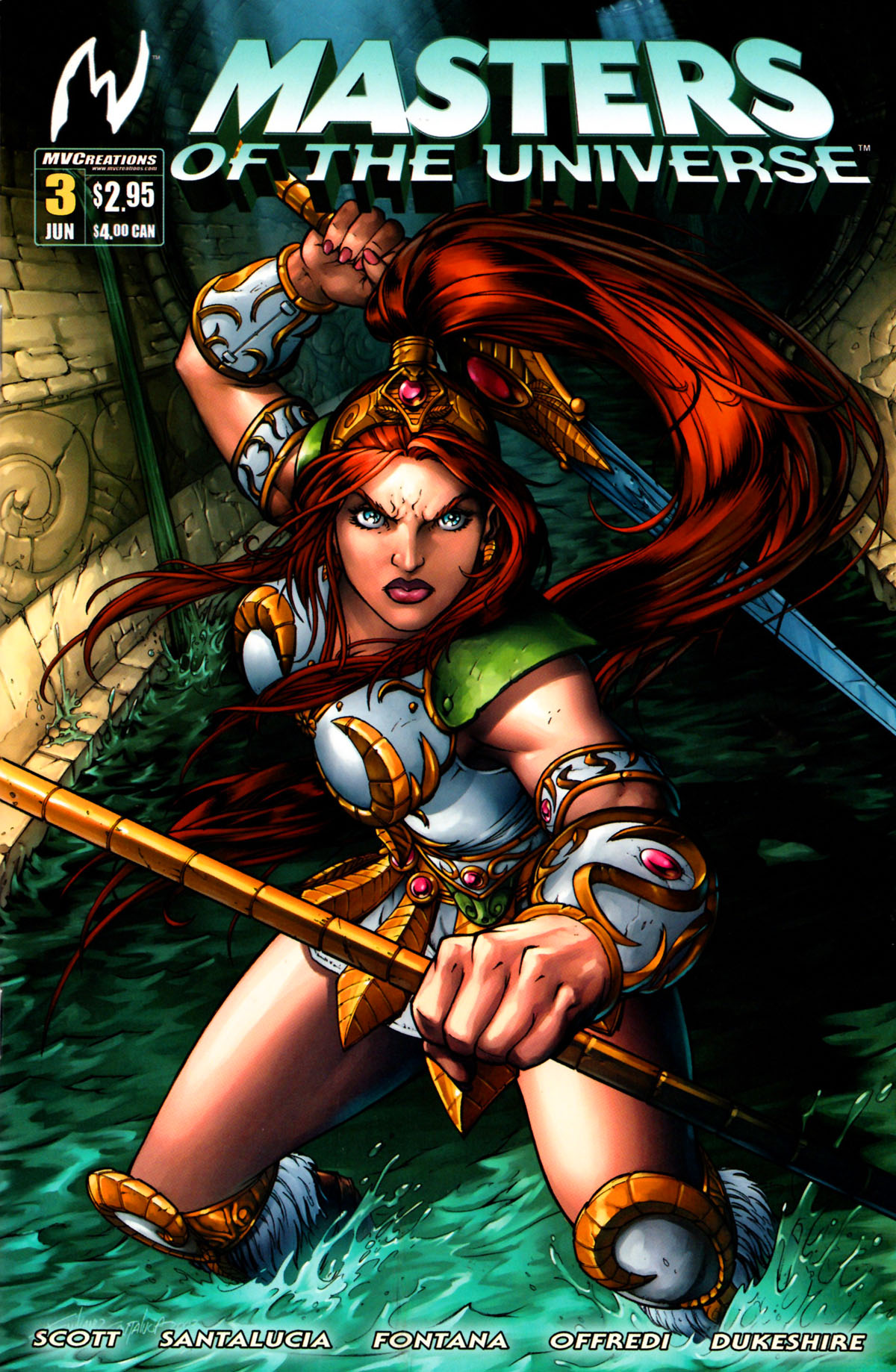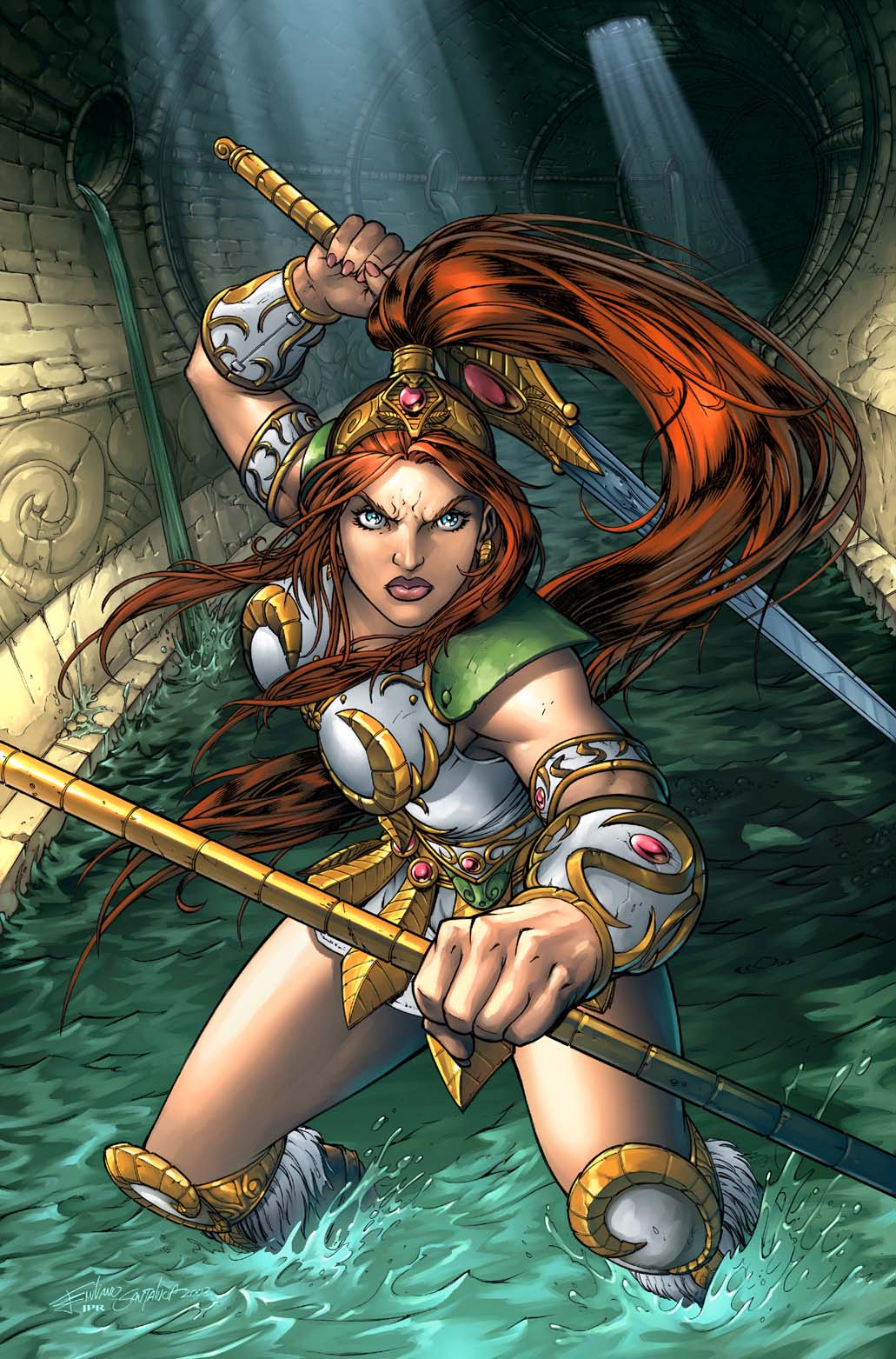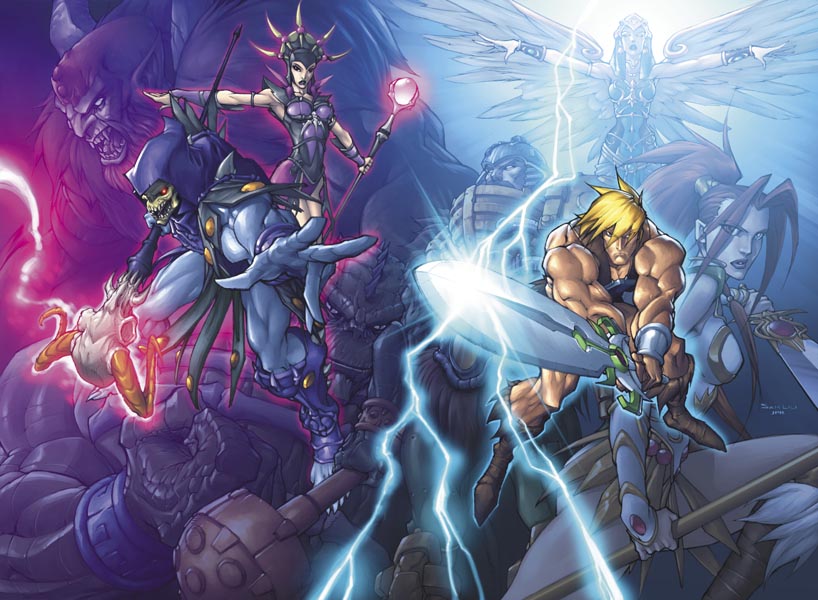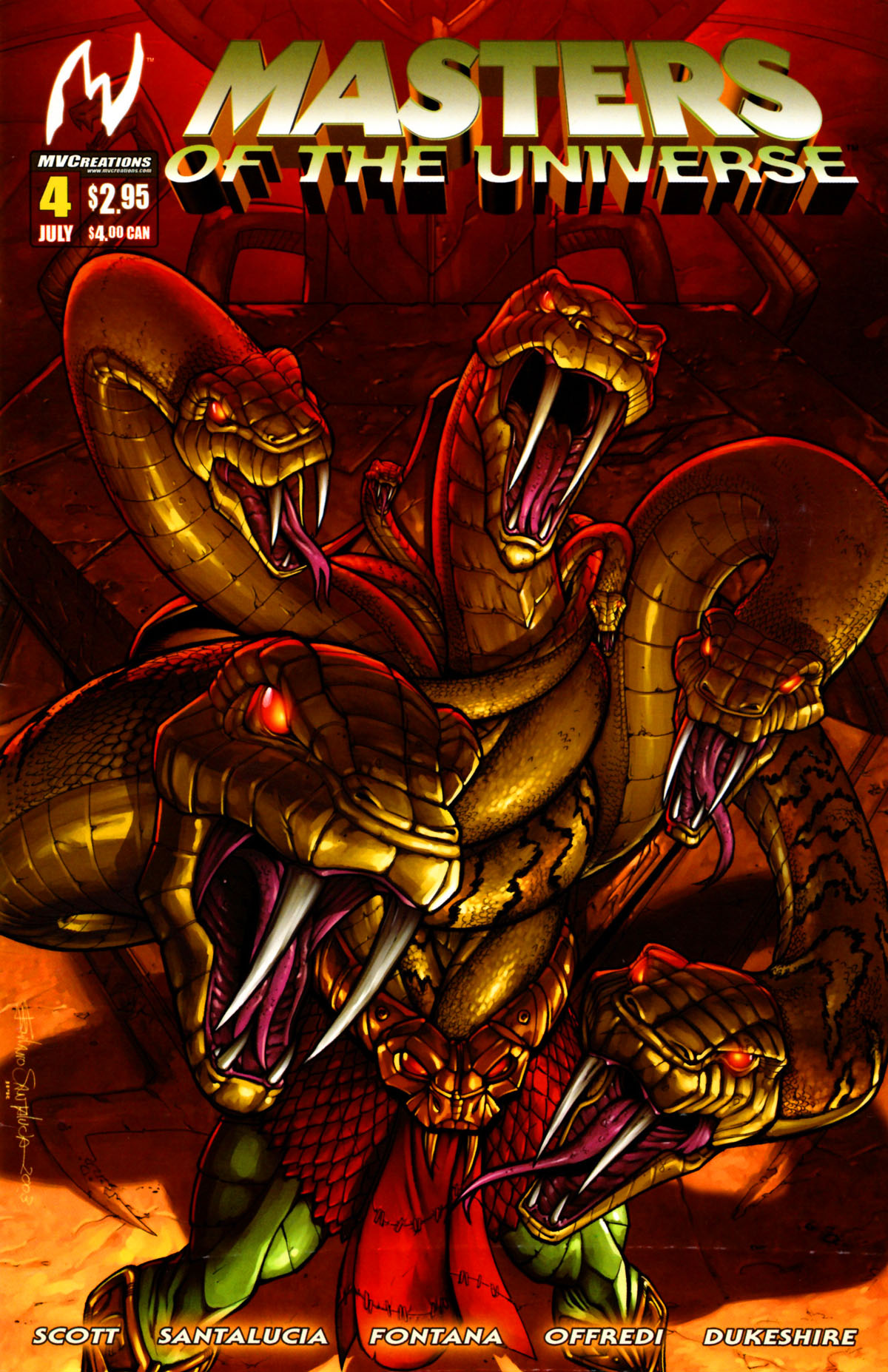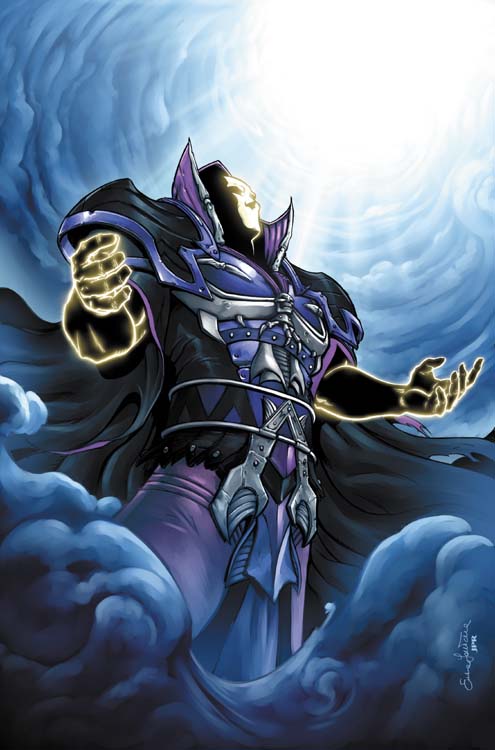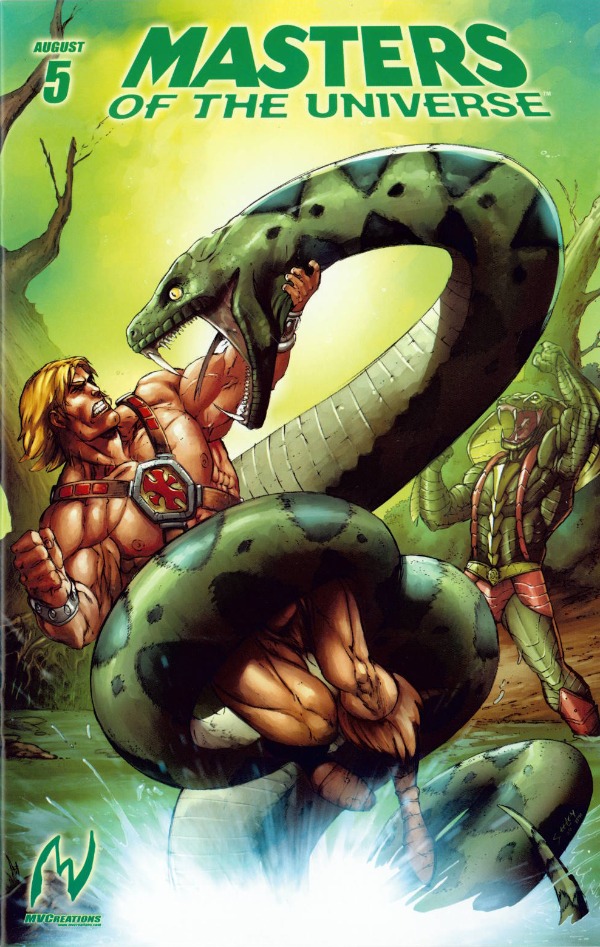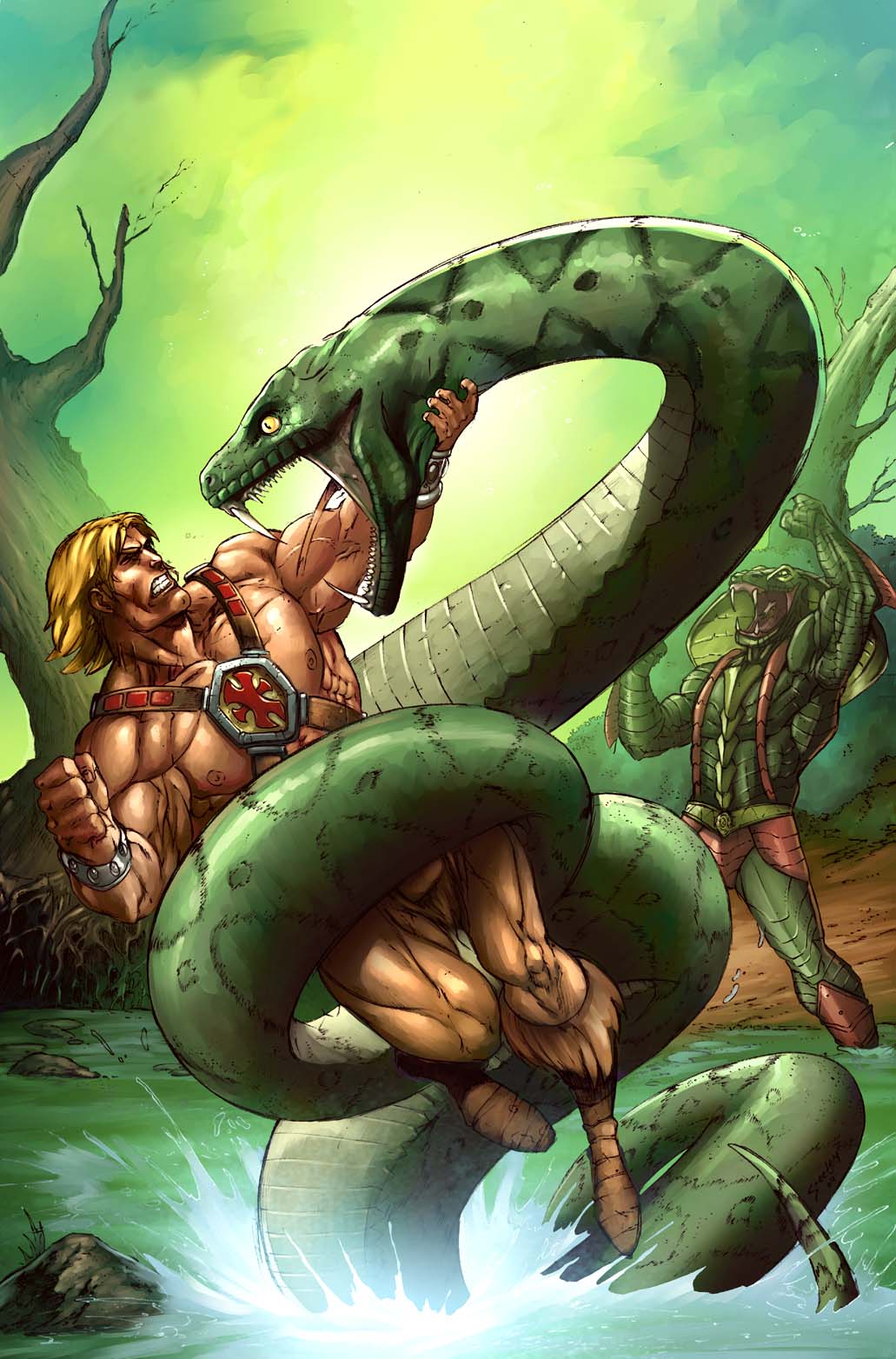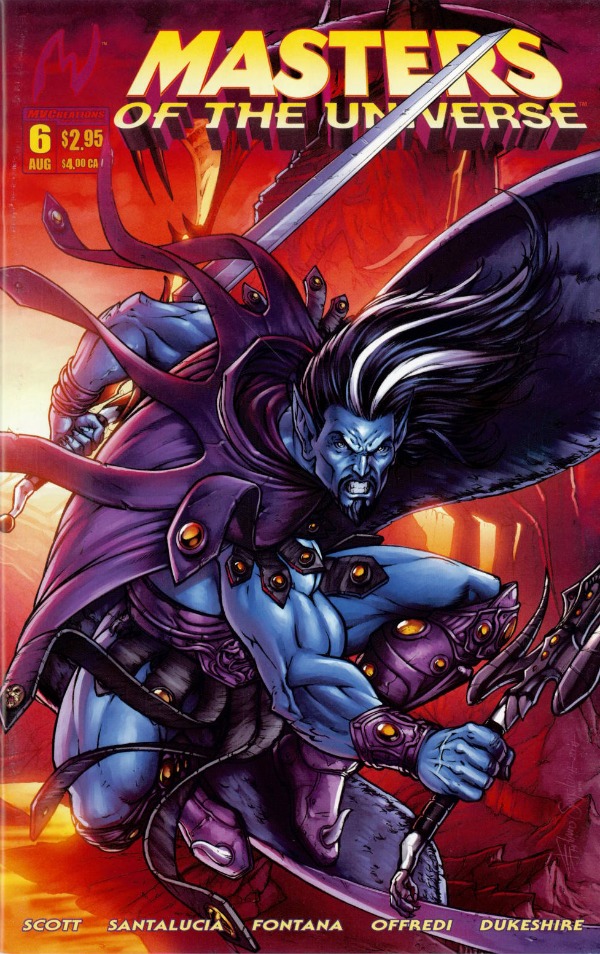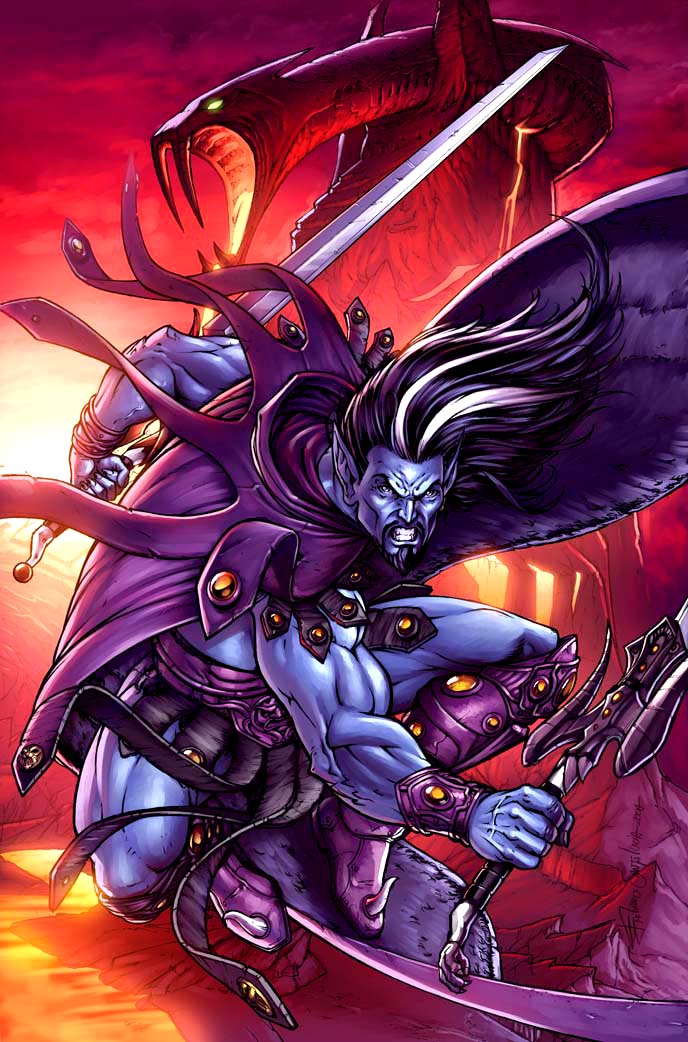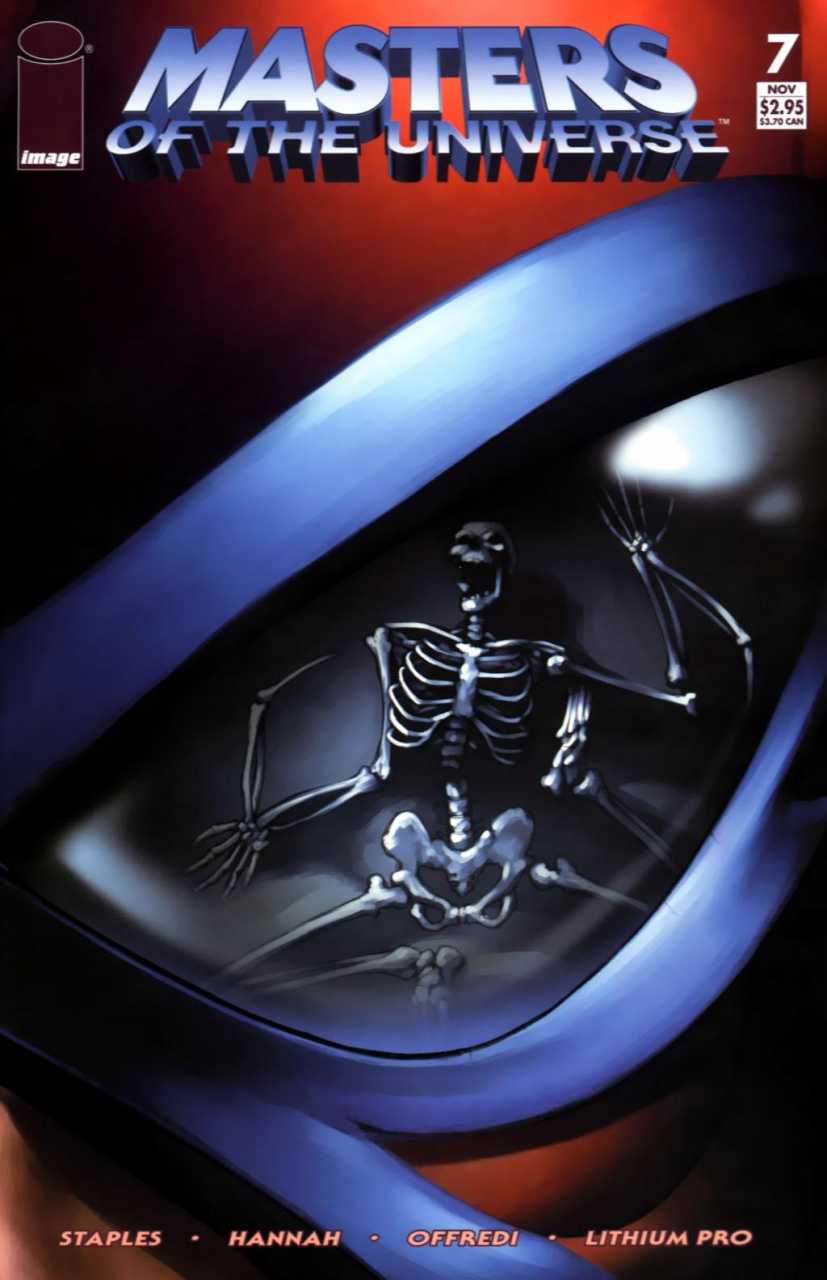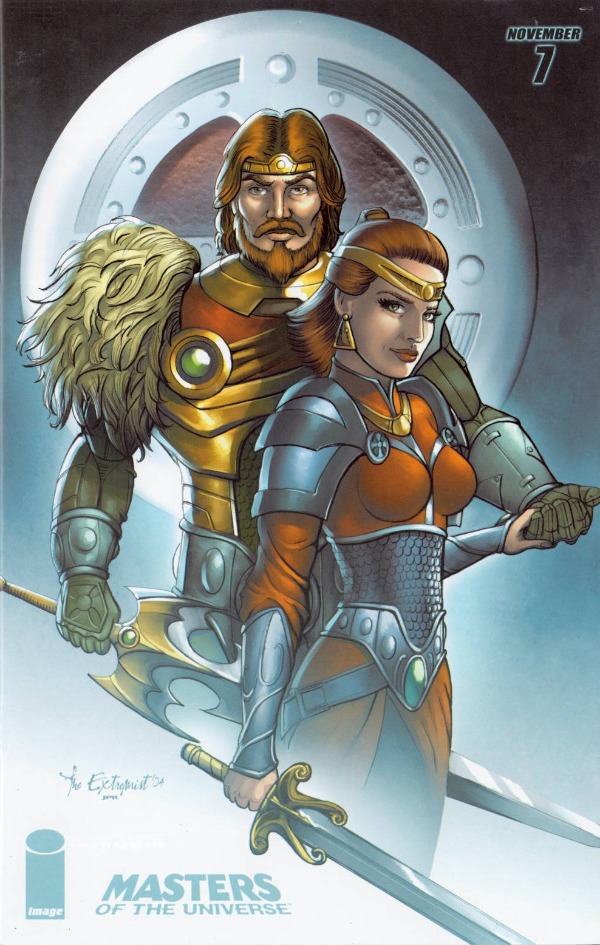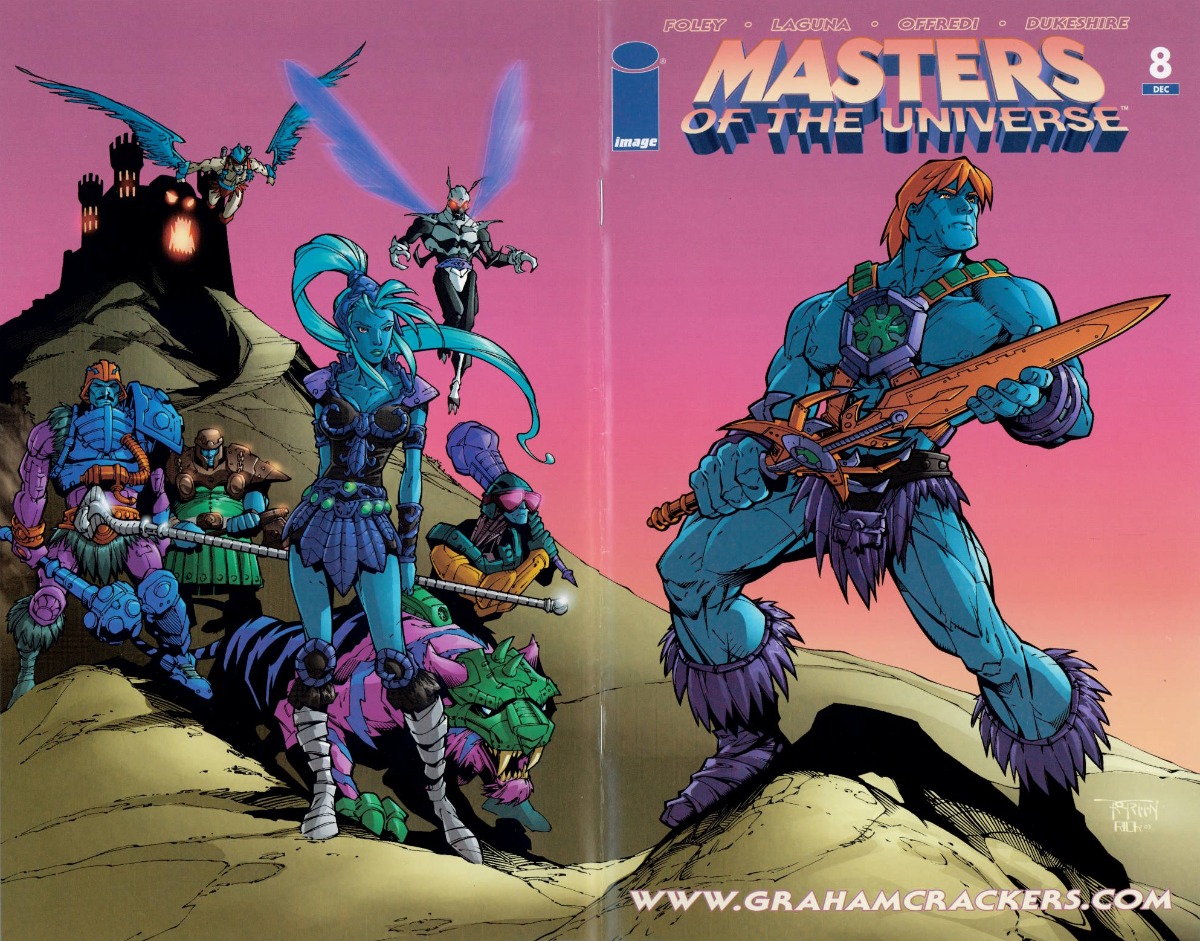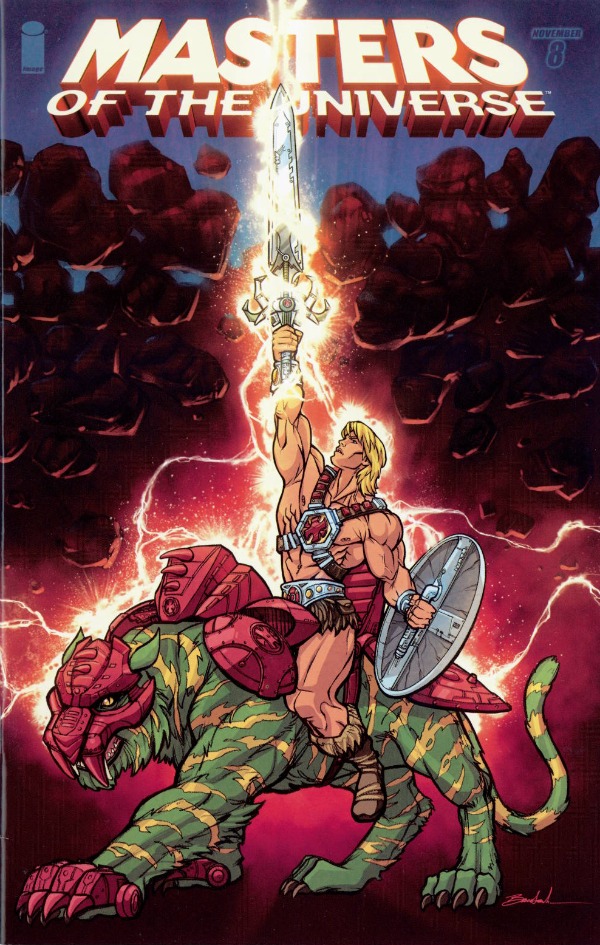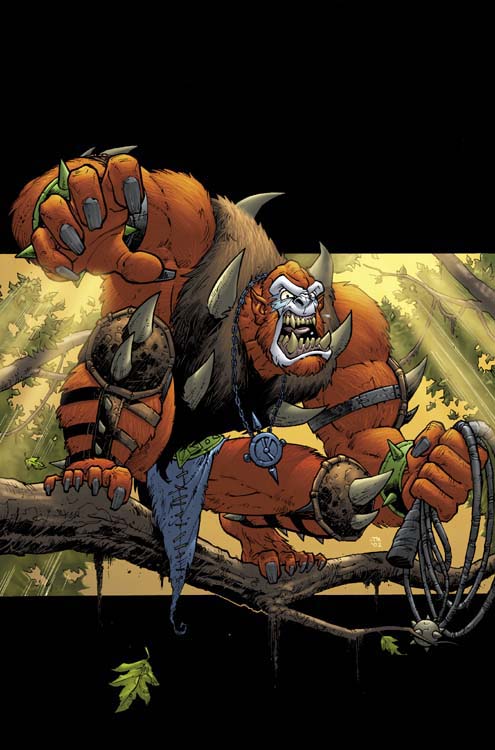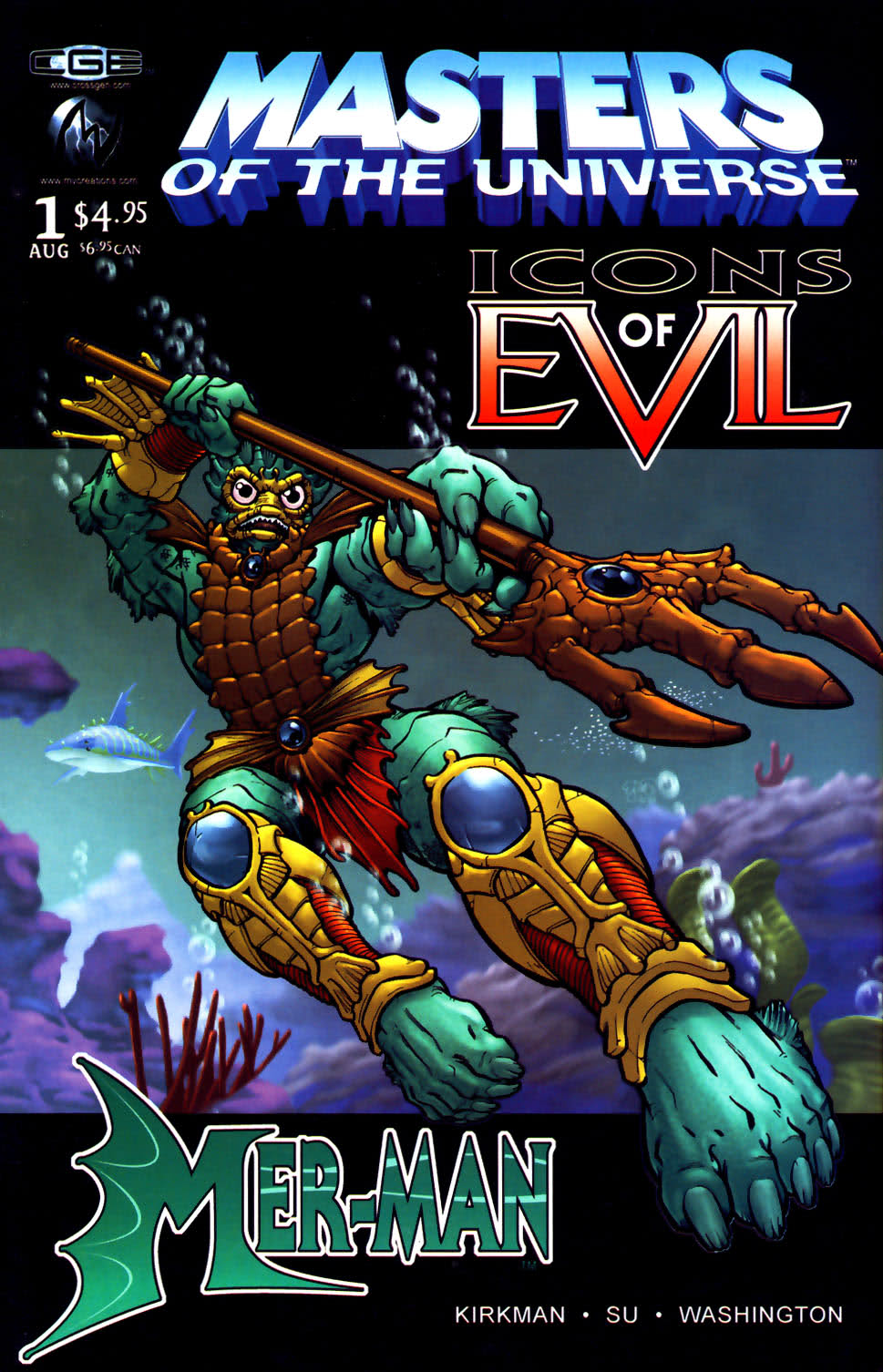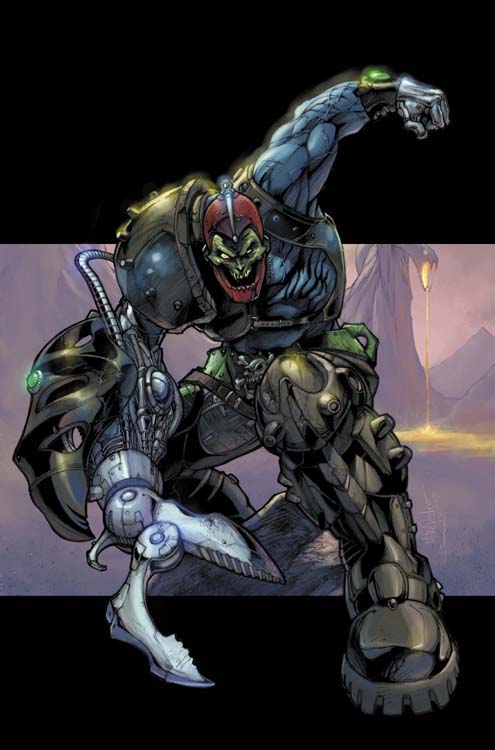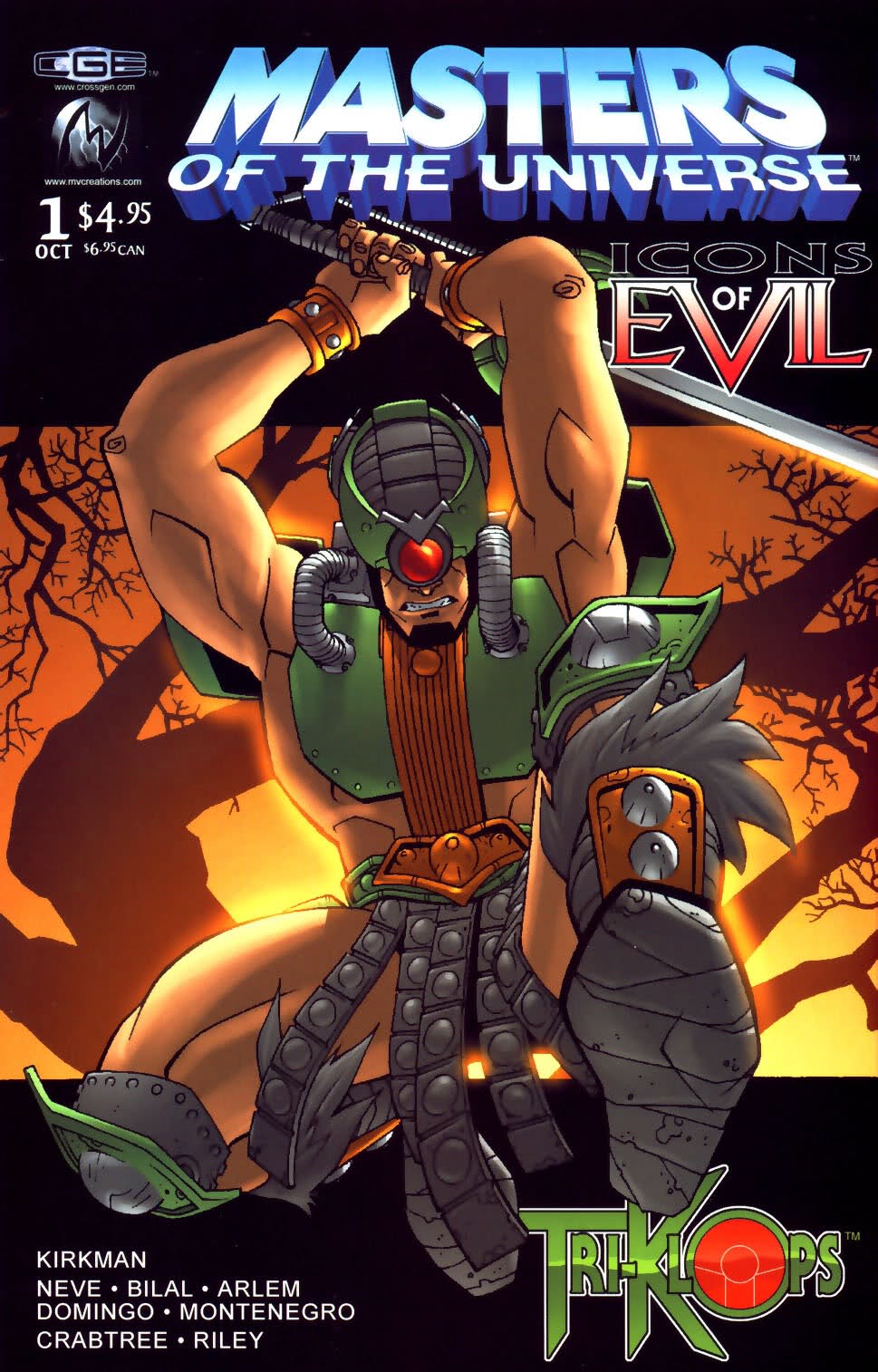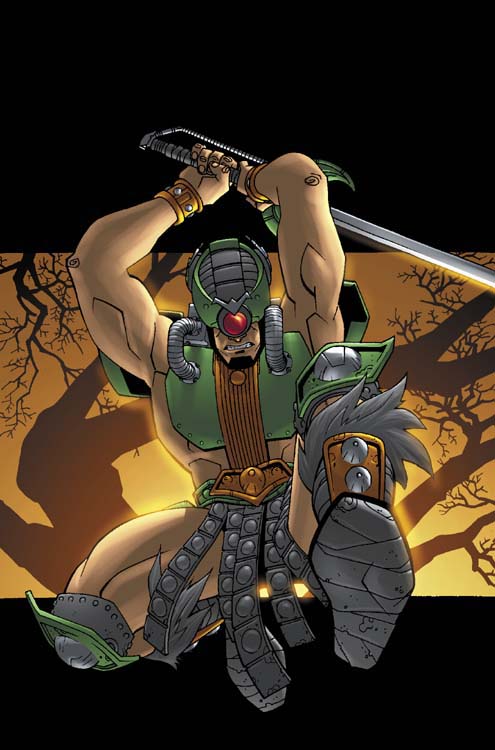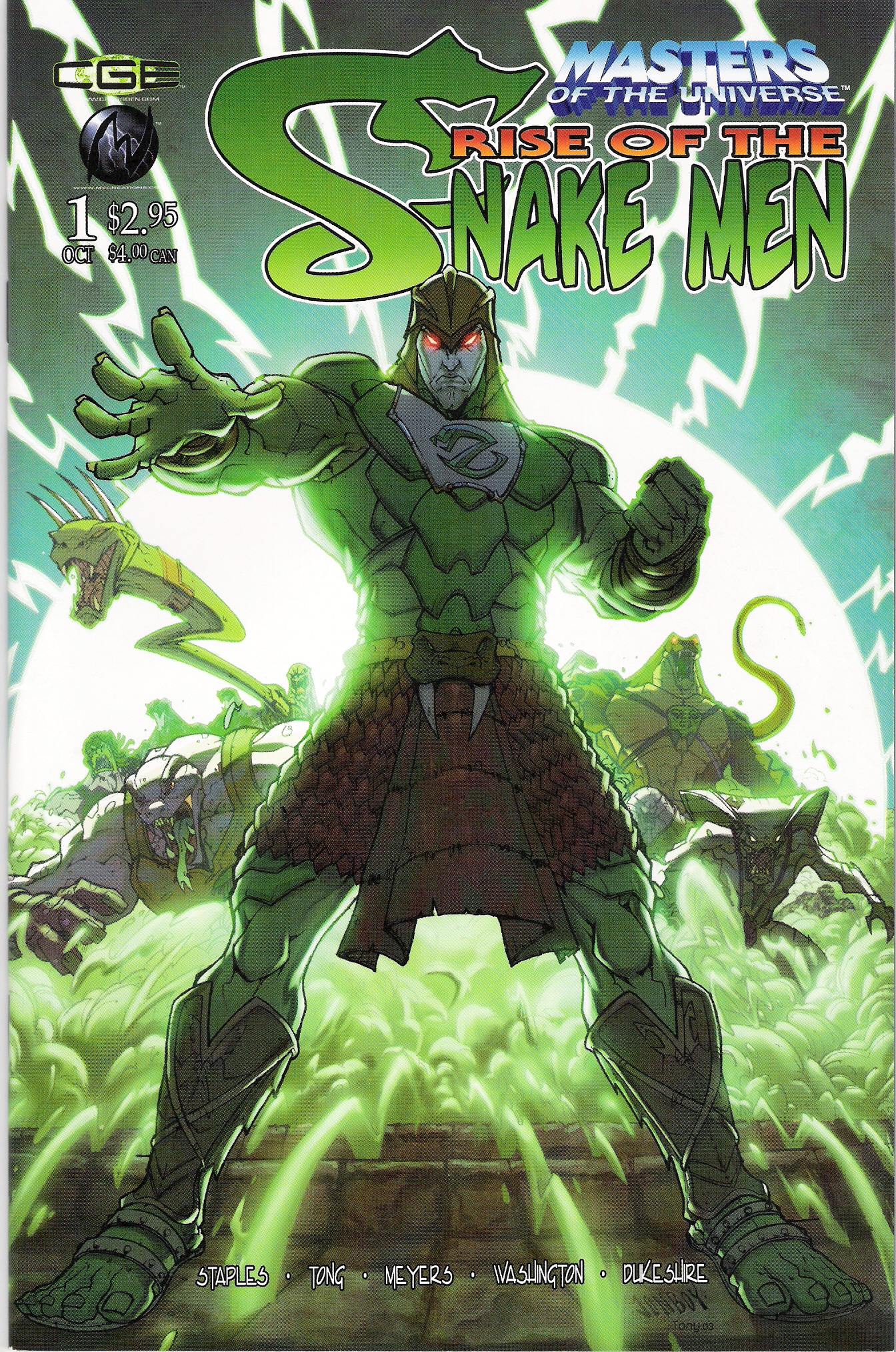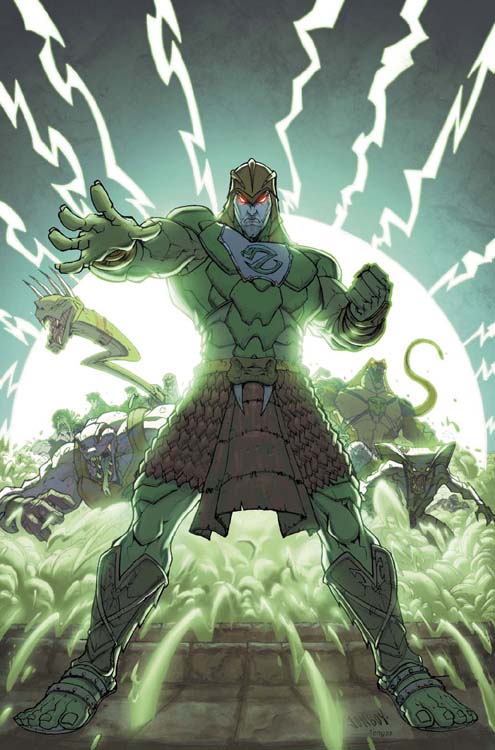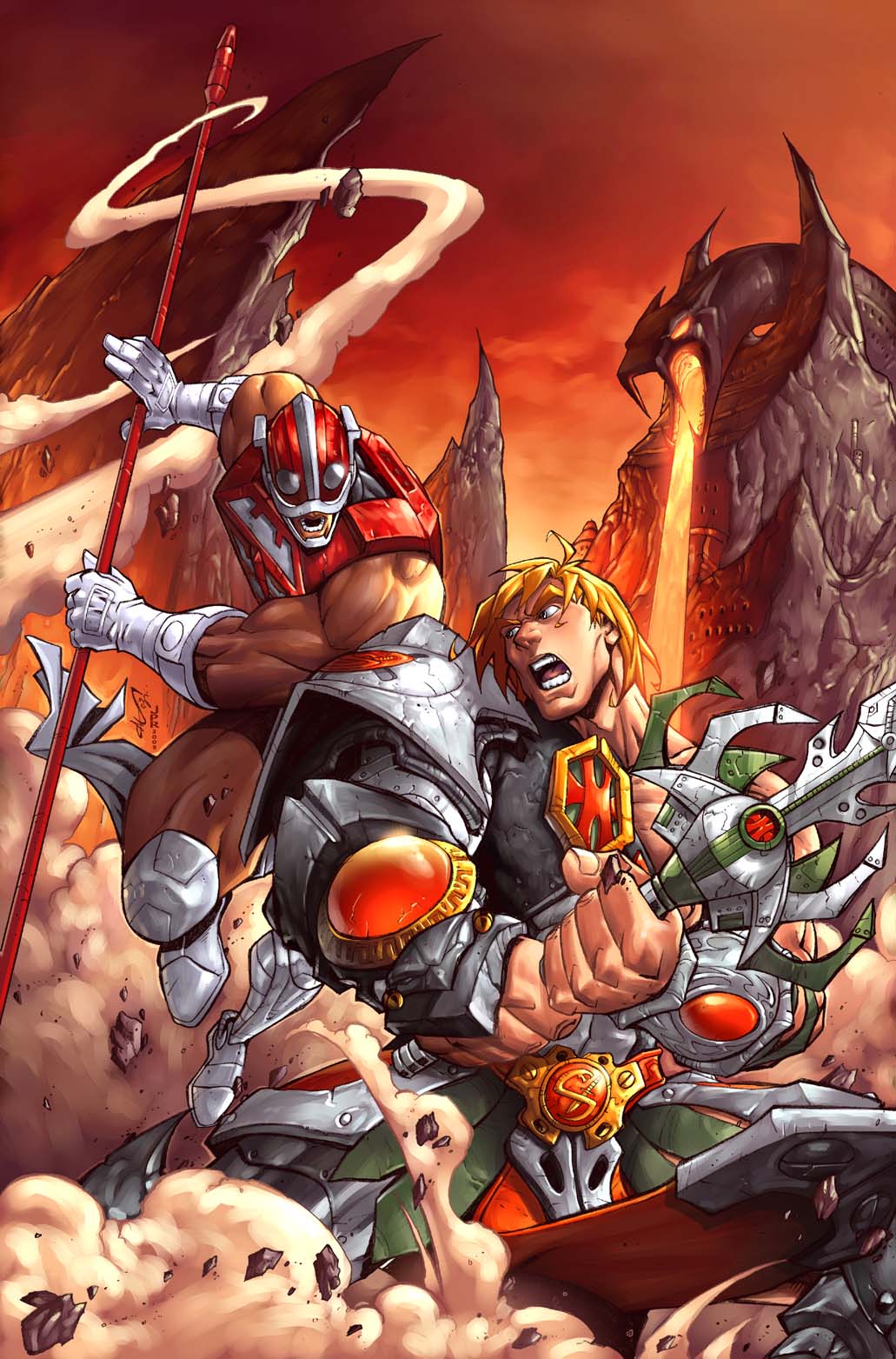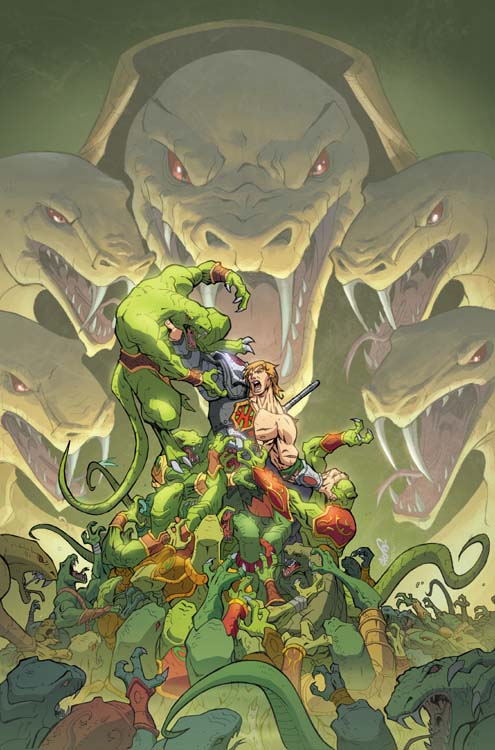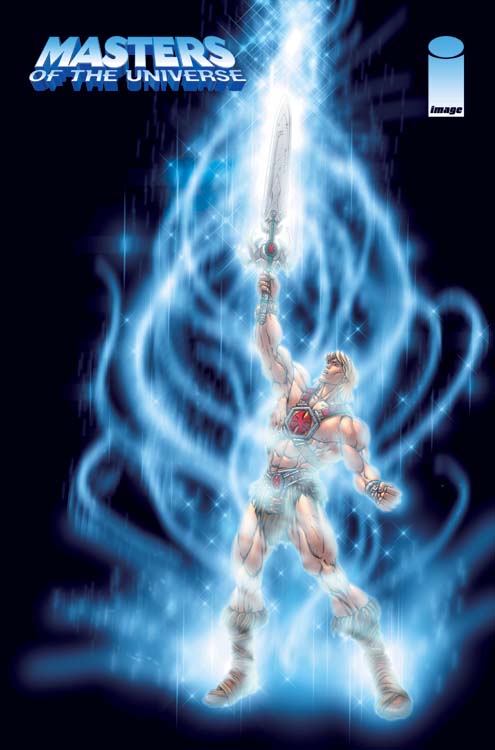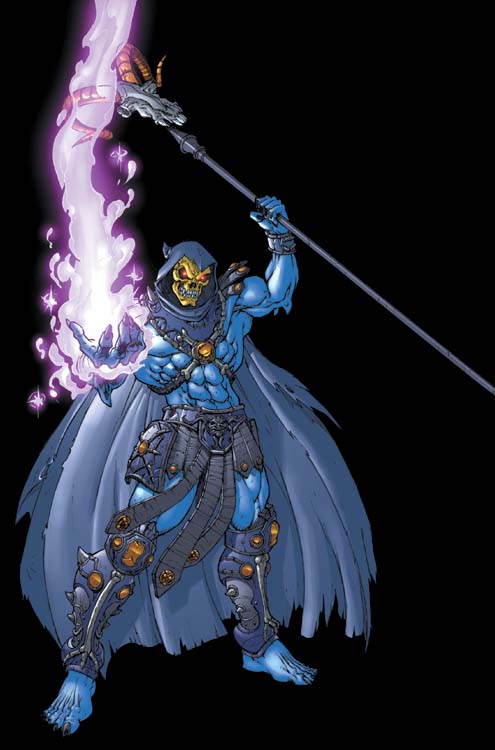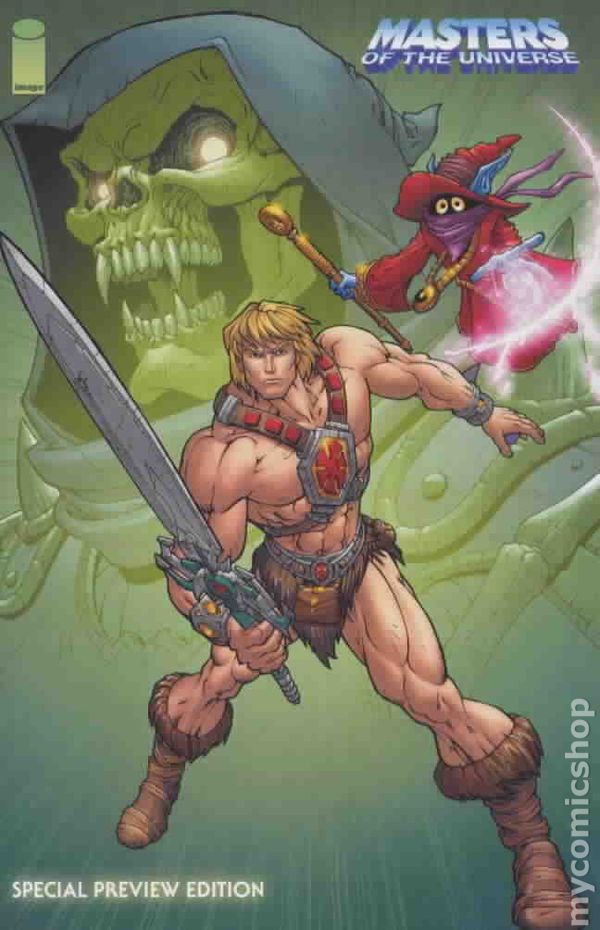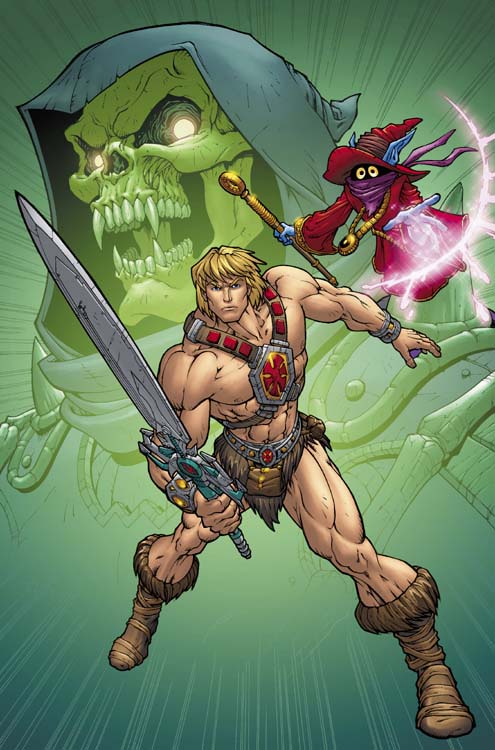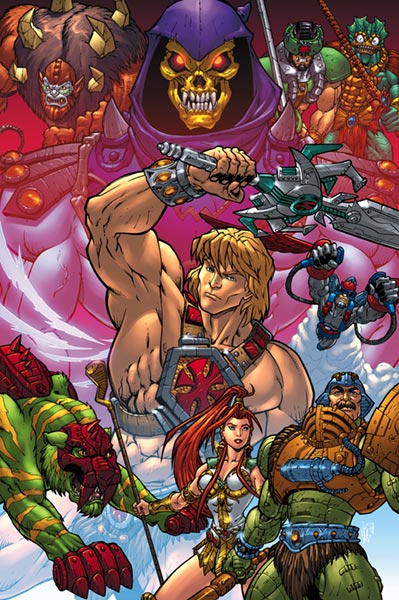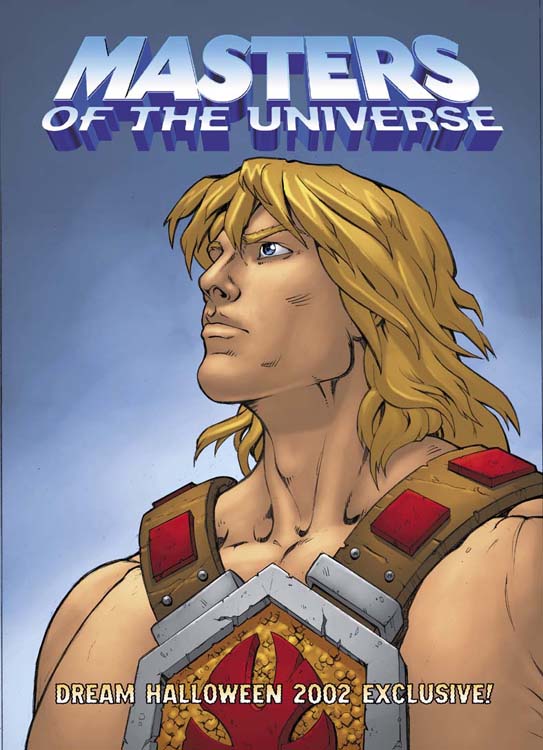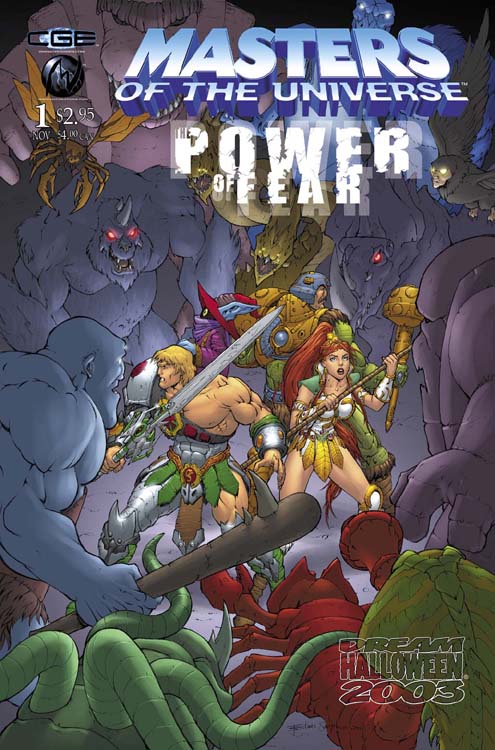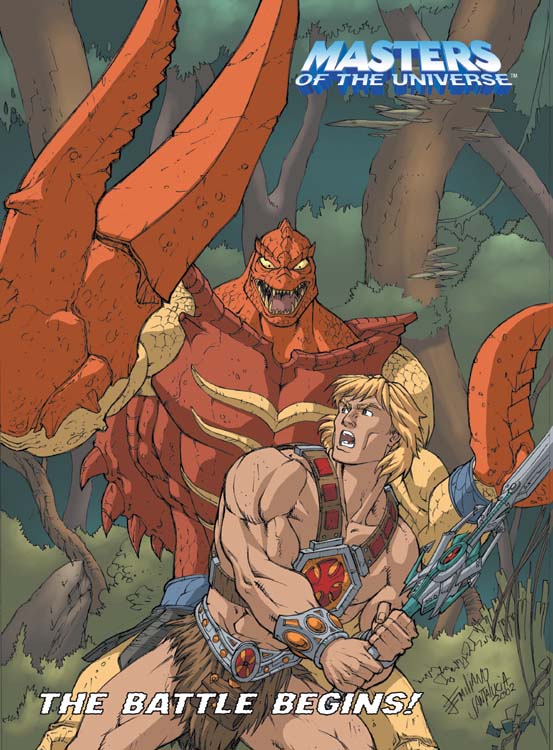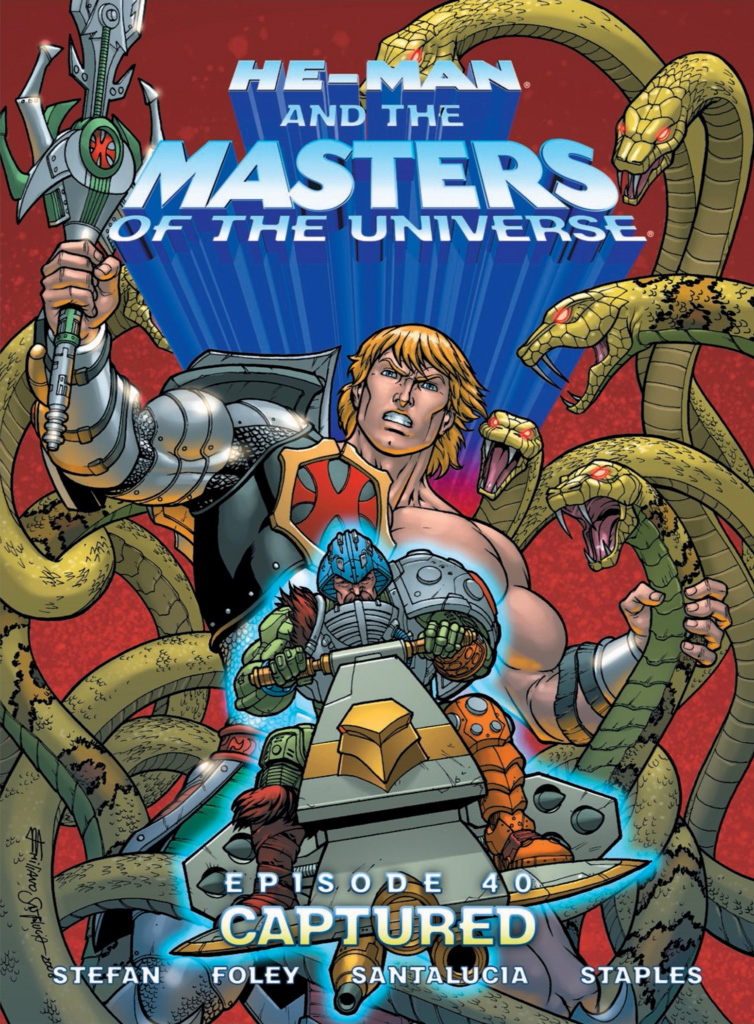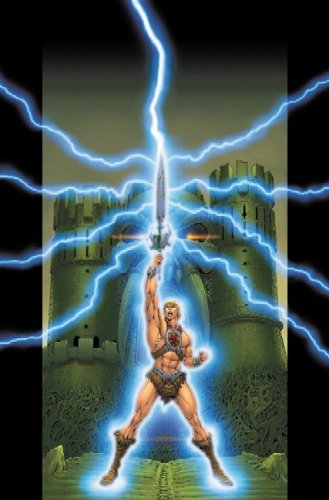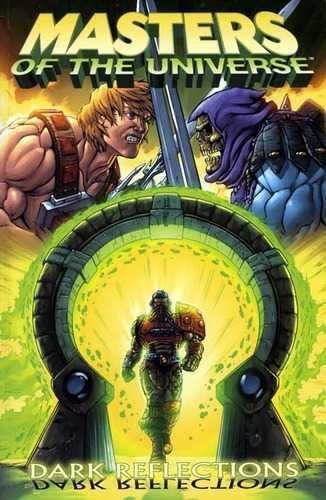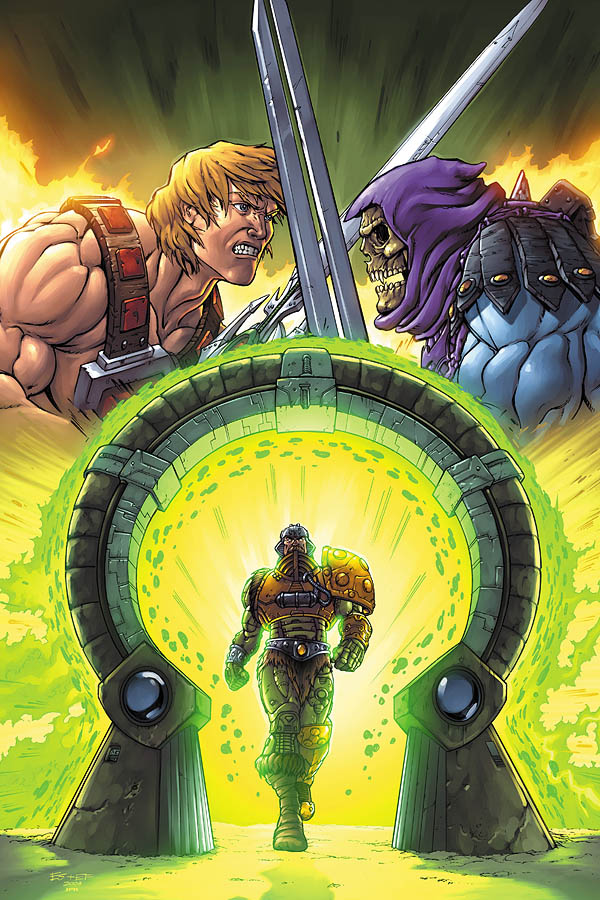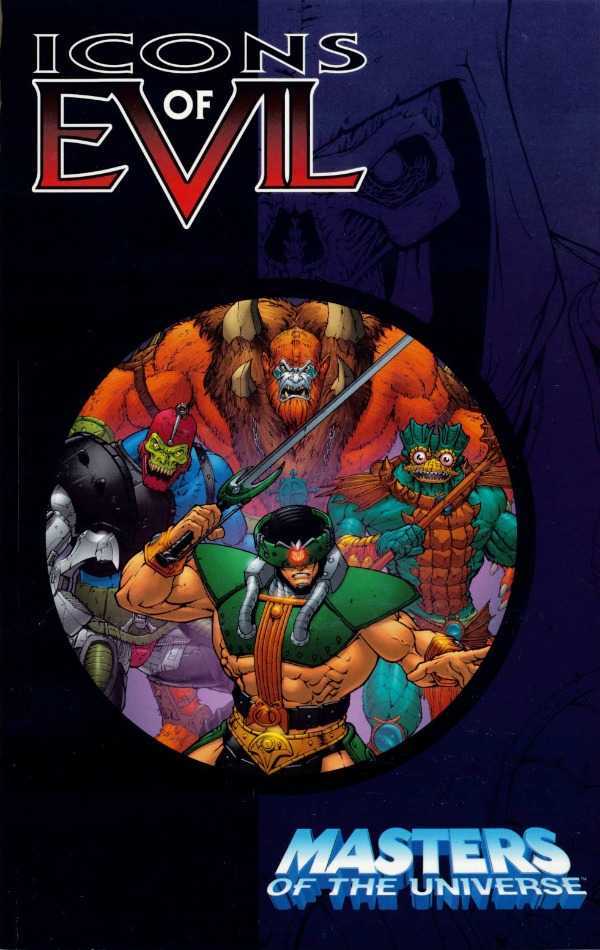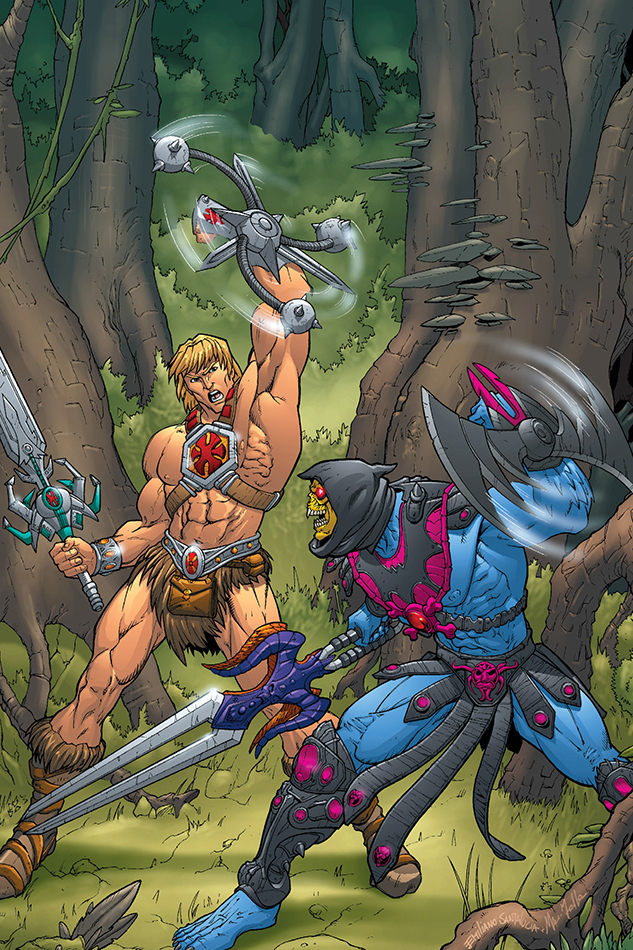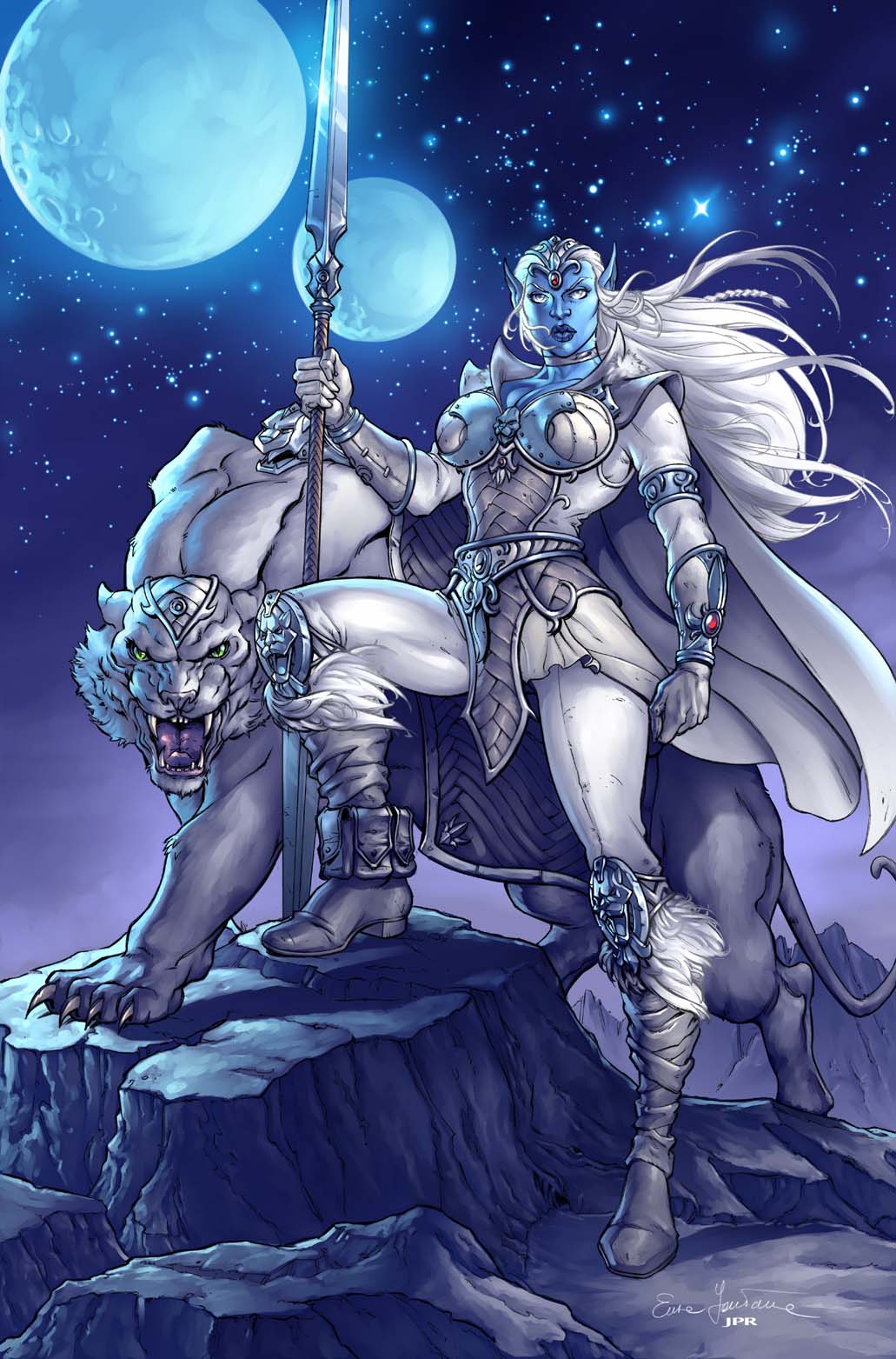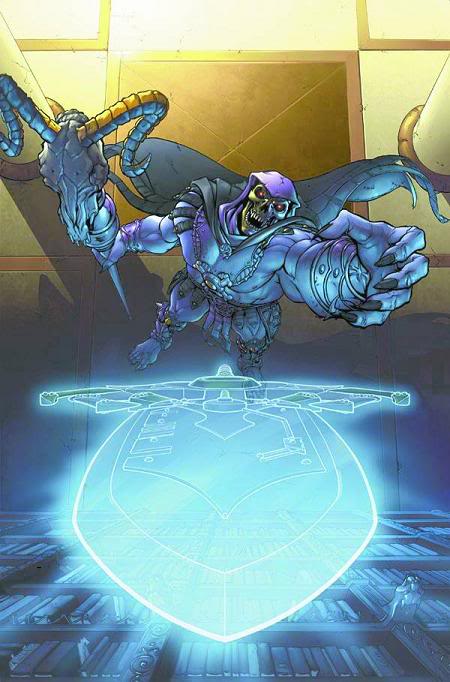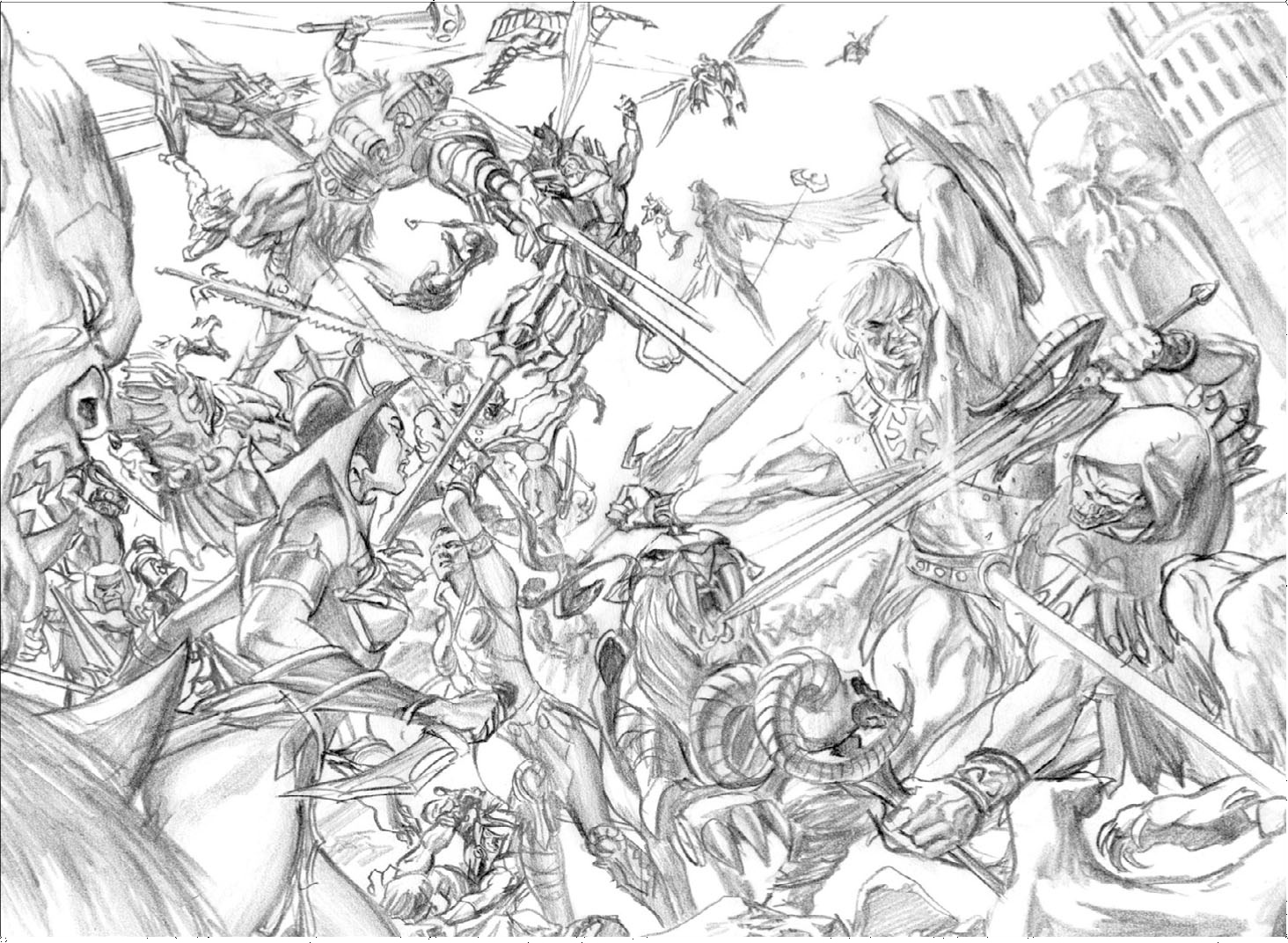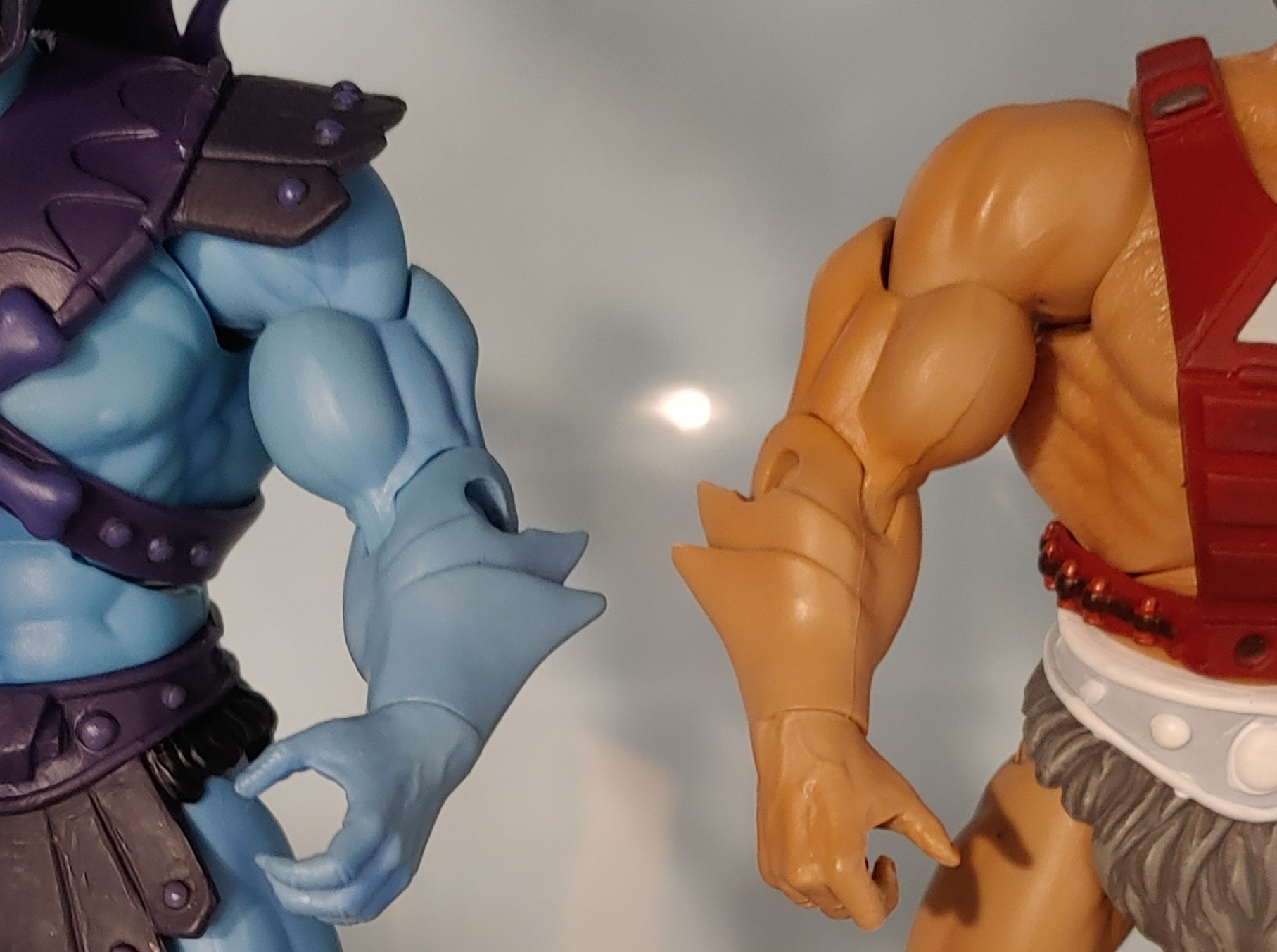
Written by Adam McCombs
The Spirit of Grayskull, also known as the Spirit of the Castle, is a reoccurring character in early Masters of the Universe stories. I’ll plot out the development of the character and the places it appeared.
The very first attempt at a Masters of the Universe story was Don Glut’s “Fighting Foe Men” treatment, prior to the first minicomics. Although the Spirit of Grayskull doesn’t appear in The Fighting Foe-Men, Mattel did provide this feedback regarding his treatment of Castle Grayskull:
Castle Grayskull
- More mysterious
- Should hold vast treasures
- Should hold secrets of the universe
- Add dangers for the unwary
Apparently one of things Glut added to make the castle more mysterious was to add “the Spirit of the Castle,” which appears in three of the four minicomics he wrote.
He-Man and the Power Sword
We see the Spirit appear first in He-Man and the Power Sword, the first published minicomic in the Masters of the Universe line. As Skeletor and Beast Man approach the castle, the Spirit warns them away:
An eerie voice — that of the castle’s all-present Spirit — warned them: “Go back! The secrets and treasures of Grayskull are for no one to posses! Go away…”
To which Skeletor responds:
“I defy you, Spirit of the Castle! Your many secrets shall be mine! I hold half of the mystic Power Sword! I shall soon possess the other half which is hidden within your walls. Then I will have full power! And none of your deadly traps will stop me!”


Later in the story, they encounter a metal door barring their way:
But as they touched the door, the Spirit of the Castle cursed them and unleashed its ghostly demons.
Skeletor vanquishes the ghost demons with his sword and says:
“Again I defeat you, Spirit of the Castle! Now, to seize your greatest treasure!”

Eventually the heroes are able to defeat Skeletor and Beast Man and send them running away. On the last page of the story the Spirt appears over the castle and says:
“You truly are the ‘Masters of the Universe’ who are destined to protect my secrets from evil forces. You should at least have some small reward.”
At this point the Spirit gifts them with Teela’s unicorn steed.

King of Castle Grayskull
In King of Castle Grayskull, Teela replaces the Sorceress (aka Goddess) as the guardian of Castle Grayskull.
Teela listened as the Spirit of the Castle spoke. “Legend tells of a warrior who will find the split halves of the Power Sword. One half is hidden at Eternia’s highest point. The other is beneath its hardest rock. With both halves, he can enter the castle and claim the throne and the secrets of the universe. You are to be the guardian here!

Skeletor manages to get both halves of the sword and tricks Teela into thinking he is the warrior spoken of by the Spirit. Skeletor defies the Spirit of the Castle:
“These things are mine!” he shouted to the unseen Spirit of the Castle. “The secrets of the universe are now at my command. Soon Eternia and all other worlds will belong to me. I am now king!”

We don’t see the Spirit again until the end of the story, after Skeletor has been defeated again.
With Skeletor departed, the Spirit of the Castle appeared again. “I must make sure that the halves of the Power Sword are never again used for evil,” said the chilling voice. “I shall send them into another dimension where even clever Skeletor will have great difficulty finding them.”
“Centuries may pass before the true king comes to claim his throne and fulfill the prophecy of the legend,” said the Spirit. “Go then, Masters of the Universe, and fight evil wherever you find it!”
He-Man and Teela did as ordered. As they departed, the Spirit of the Castle seemed to smile, knowing that at the proper time He-Man would prove himself to be the true King of Castle Grayskull.


Vengeance of Skeletor
In this story, the Spirit appears only at the very end, after the heroes have once again defeated Skeletor and his forces:
“No doubt they will invent new plots of evil,” said the Spirit of the Castle, appearing. “But you, the Masters of the Universe, will be ready for them.”

MOTU Bible
The Masters of the Universe Bible, written December 1982 by Michael Halperin, contains the next appearance of the character, now called the Spirit of Grayskull. In short, in order to hide the power of the Council of Elders and the Hall of Wisdom, the council transformed themselves into the Spirit of the Council. Then the Hall of Wisdom was transformed into the foreboding Castle Grayskull, with “the wisdom” (meaning perhaps the Spirit of the Council?) becoming the Spirit of Grayskull. The relevant text is quoted below:
ZODAC, the wise leader of the Council of Elders, called to the stars for advice. In a shimmering, gleaming beam a figure appeared out of the cosmos — the figure of an elegant and beautiful woman adorned in snake shaped armor and bearing a twisted snake-headed staff.
For centuries Eternia dwelt without fear, the SORCERESS told them, and now the time of testing fell upon the planet. For too long the Council had made all decisions; Their people had lost the ability to think for themselves. The time had arrived to cut the umbilical cord and permit Eternia the right to exist on its own.
The Council listened to the vision which promised them that if ever the forces of evil should try overcoming Eternia a champion would arise to defend the planet. A champion not seen in all the universe. A being so powerful and filled with good that evil, no matter how mighty, could not stand against him. However, with all the champion’s virtue he needed one more element to make him the ultimate ruler of the Universe — he required the collective wisdom of the Elders. And that he would not have until he proved himself against the dark forces.There Lay the danger. For if the evil powers discovered the secret — this key to destiny — they might destroy all that’s harmonious in Eternia. Once that occurred light would go out all over the planet and it could end with the same fate as Infinita.
Zodac gathered the Council of Elders in the Hall of Wisdom and collectively they concentrated their mind force until the sheer power of their consciousness created a mighty force field. At that moment, an implosion cracked through the corridors of the Hall and the Council disappeared in a blinding flash of energy. Only Zodac retained his human form as one of the Eternia’s guardians. In the Council’s place existed a mass of light at once denser than the densest material in the universe and as light as a ghost. It rose to the topmost parapet of the Hall of Wisdom where the Spirit of the Council looked to the far horizon — past the Evergreen Forest; beyond the Vine Jungle; above and through the Ice Mountains to the sealed Space Portal. It knew that one day an Infinitan would discover how to break the spell. That evil person would search the magnificent Hall of Wisdom. The Spirit, along with Zodac determined that it would not be found — at least not in its present state.
A great aura of energy burst forth from the mass of light which had been the Council of Elders. It surrounded the Hall of Wisdom and an astonishing shuddering and shimmering arose as the very air around the Hall glowed with a cosmic light. Anyone witnessing the experience would have seen in incredible sight – almost mirage-like, the Hall’s very atomic structure shifted; the molecules seemed to run wild as the building changed form.
The wisdom of that which once was the Council understood that the demons of Infinita would look for the magnificent edifice embodying all that it wise and good. But if they saw a dark and forbidding place they might go aside. The wisdom of the Council planned to hide the once beautiful hall behind the rocks, trees and overgrowth of the Evergreen Forest.
When the atoms and molecules slowed the Hall of Wisdom ceased to exist. In its place stood the dark, green, crenelated fortress of CASTLE GRAYSKULL. Its craggy towers and black windows looked out upon Eternia. The most striking feature of the castle was the entrance. The portal had the face of a skull. The skull’s lower jaw created a jawbridge and anyone wishing to enter had to have immense courage. Behind these walls and within the corridors of Grayskull dwelt the wisdom transformed into the Spirit of Grayskull. The Sorceress remained guarding the castle against all intruders. Zodac would sail the universe, keeping watch over Eternia, keeping vigilance over those who believed in virtue and wisdom, but not interfering with the natural course of events. Thus did Castle Grayskull slowly subside out of sight and the minds of all Eternians except as myth and legend.
MOTU Bible
The transformation of the Hall of Wisdom into Castle Grayskull is actually illustrated in the Kid Stuff story, Castle Grayskull, although the Spirit of Grayskull is not mentioned:


Filmation
The Spirit appears in only one Filmation episode, “Teela’s Triumph.” In the story, the Spirit of Grayskull appears as a floating head in the Eternos Palace courtyard. Clearly this is based on the Halperin Bible, as it’s not called the Spirit of the Castle and it has no visual similarity to the Spirit in the Glut/Alcala stories. He appears to tell Adam, Teela and Man-At-Arms that the Sorceress has disappeared. The Spirit tells Teela that she must guard Castle Grayskull while the others search for the Sorceress.

When Teela enters the castle, the Spirit instructs Teela to take her rightful place on the throne of Castle Grayskull. He instructs her in the use of Grayskull’s power and advises her when Skeletor and his minions try to take over. Teela is able to fend off the Evil Warriors until He-Man is able to rescue the Sorceress.




The Power of Point Dread
Spirit’s next minicomic appearance would be in The Power of Point Dread, part of a comic/record set that came packed with Point Dread and the Talon Fighter. Like the earliest comics, this was illustrated by Alfredo Alcala. The author of this story, however, is unknown.
In the story, He-Man notes that, after dispatching Skeletor and Beast Man, the Talon Fighter and Point Dread are his key to entering Castle Grayskull when he lands on top of the tower. The Spirit of the Castle appears and addresses him:
“That’s correct, He-Man. Yes, once again, you have saved the Castle from Skeletor, He-Man. I thank you.
“Return now to your city. Skeletor’s spell is broken. The king is well and the monsters have vanished.”


Piu Comics
The Spirit appears several times in the Italian Piu comic series. The Piu series is based closely on the look of the original four Alcala minicomics, so it’s no surprise that the Spirit appears occasionally throughout the series.
The Spirit of the Castle
In this story, we don’t actually see the Spirit, but Teela calls on it using a spell that forces Beast Man and Mer-Man out of the Castle. All of the Piu comic scans in this article come from Ben Massa/Orko’s Keep:




The Mockery
In this story we get to see the actual Spirit of the Castle illustrated, which looks very much like Alfredo Alcala’s interpretation. In the story, Teela warns the Spirit of Skeletor’s immanent arrival so it can thwart his attempt to take over.



Ice and Fire
The Spirit appears again in “Ice and Fire.” In the story, Teela calls on the Spirit to help her save Stratos and Zodac:



Update: Øyvind Meisfjord has pointed out that the Spirit also appears in the Eternia’s Deadly Maze Boardgame:


It also shows up at the end of the “Cloudy Climbs” story in one of the early Golden coloring books:



Personally, I’m quite fond of the original Spirit of the Castle concept. I actually have a very nice custom glow-in-the-dark version of it, shown below. You can read more about that here:

Thank you to the following individuals who are current Patreon supporters!
- Adam A.
- Allison T.
- Ben M.
- Eric H.
- João S.
- Jon E.
- Max I.
- Mike G.
- MotuOriginsCork
- Orion W.
- Øyvind M.
- Philip O.
- Robert B.
- That Clyde Guy
Want to support the blog? Consider becoming a Patreon supporter. You’ll also gain access to exclusive content and early access to posts on the blog. Thank you!
